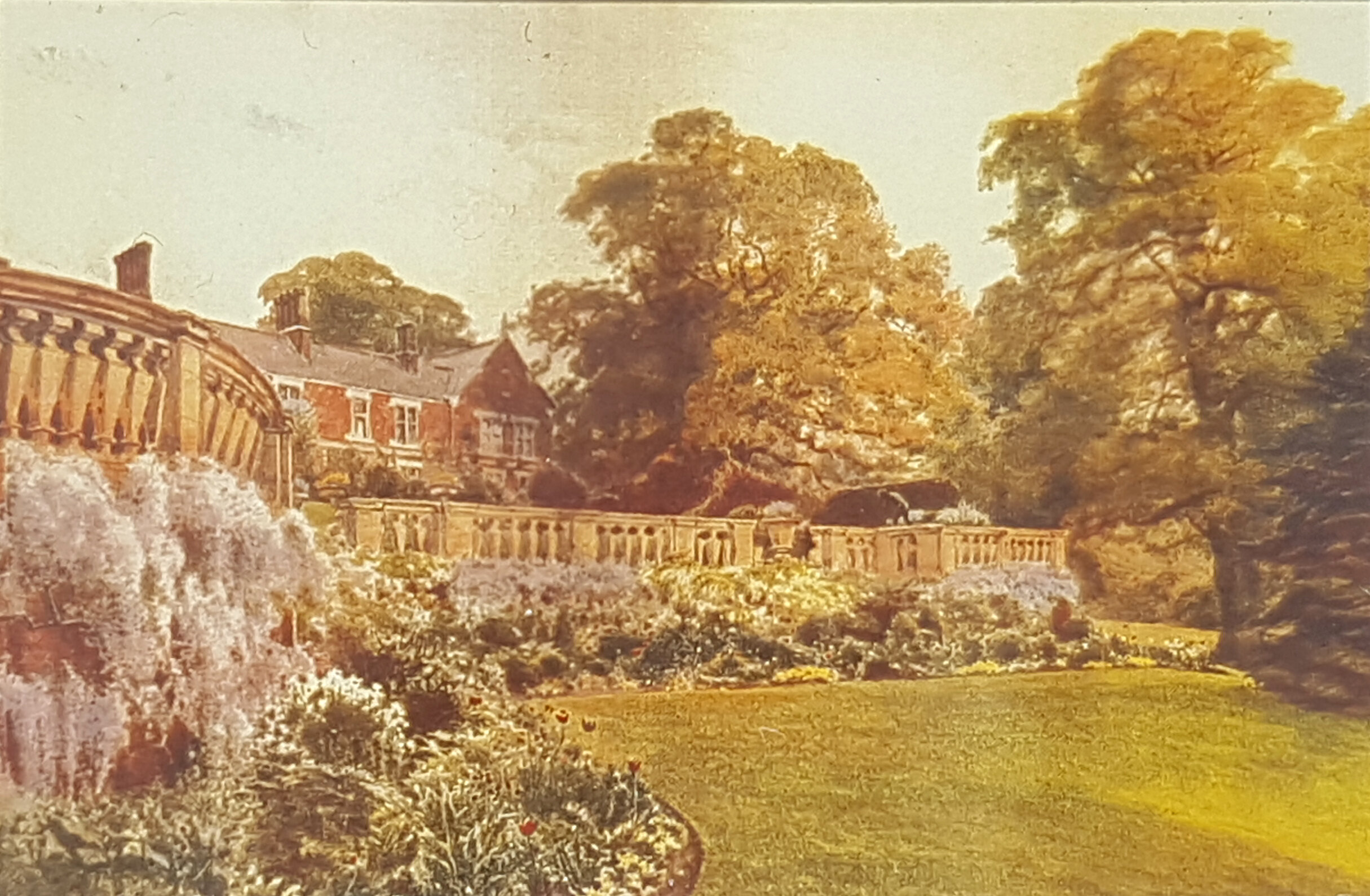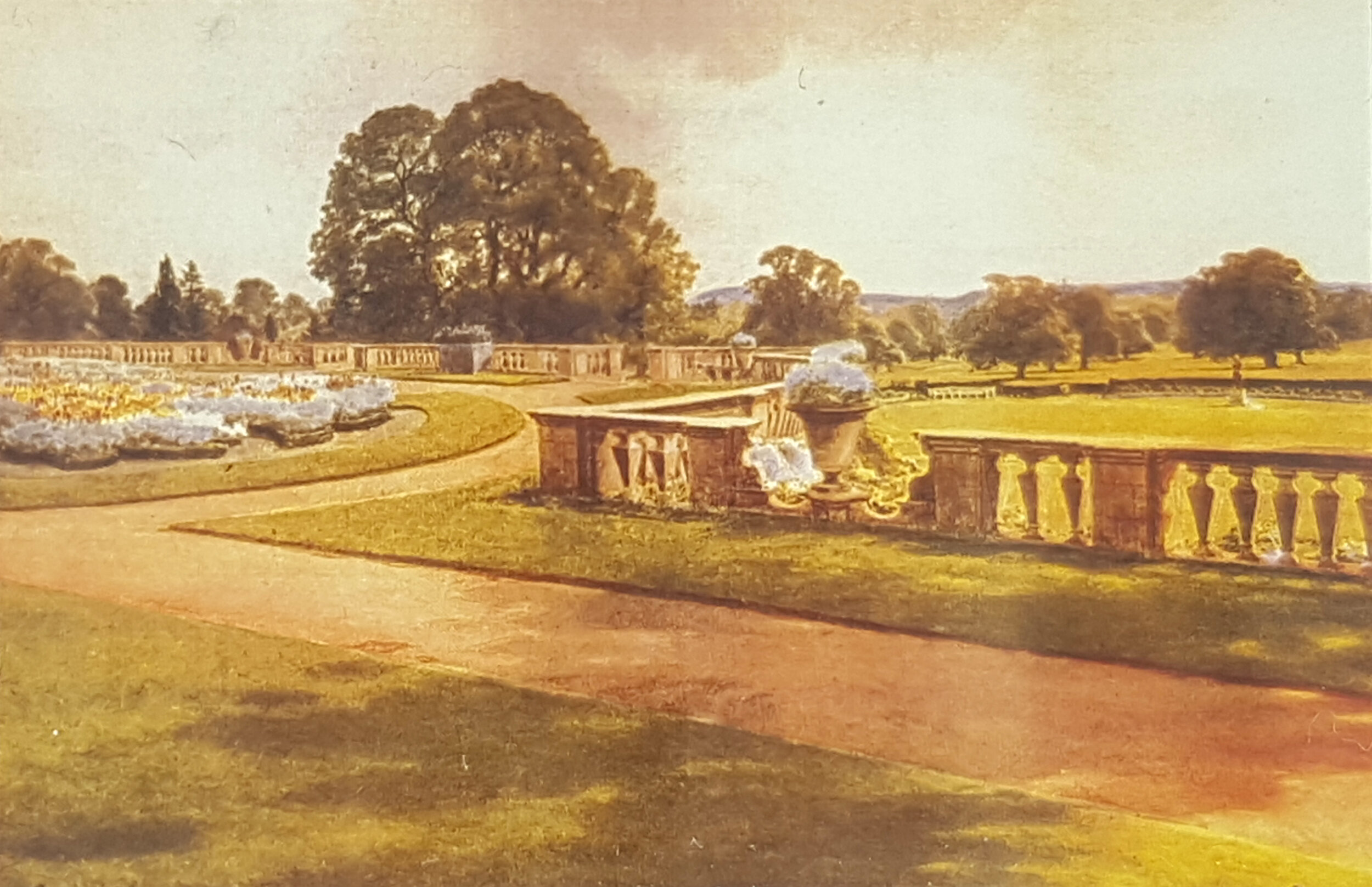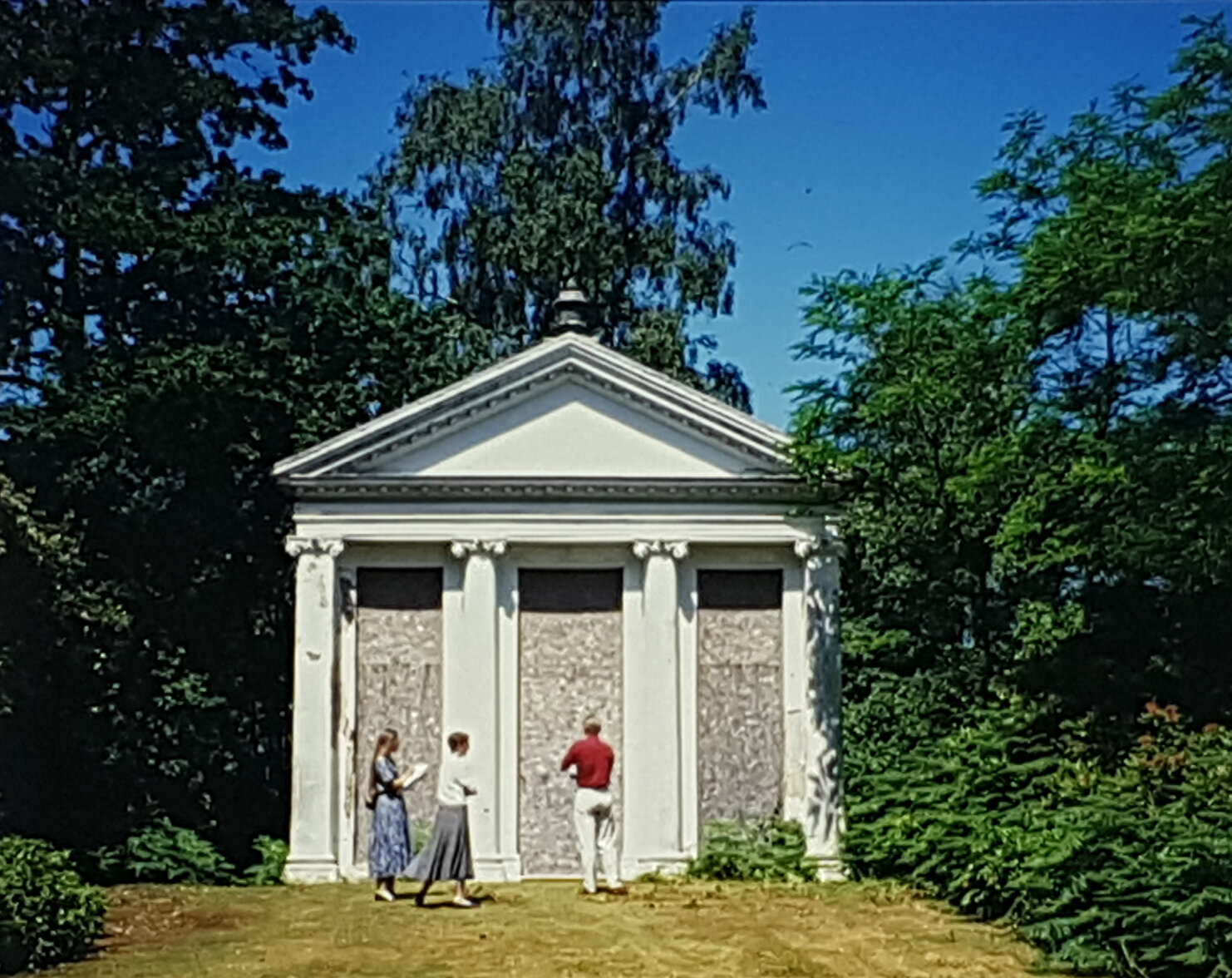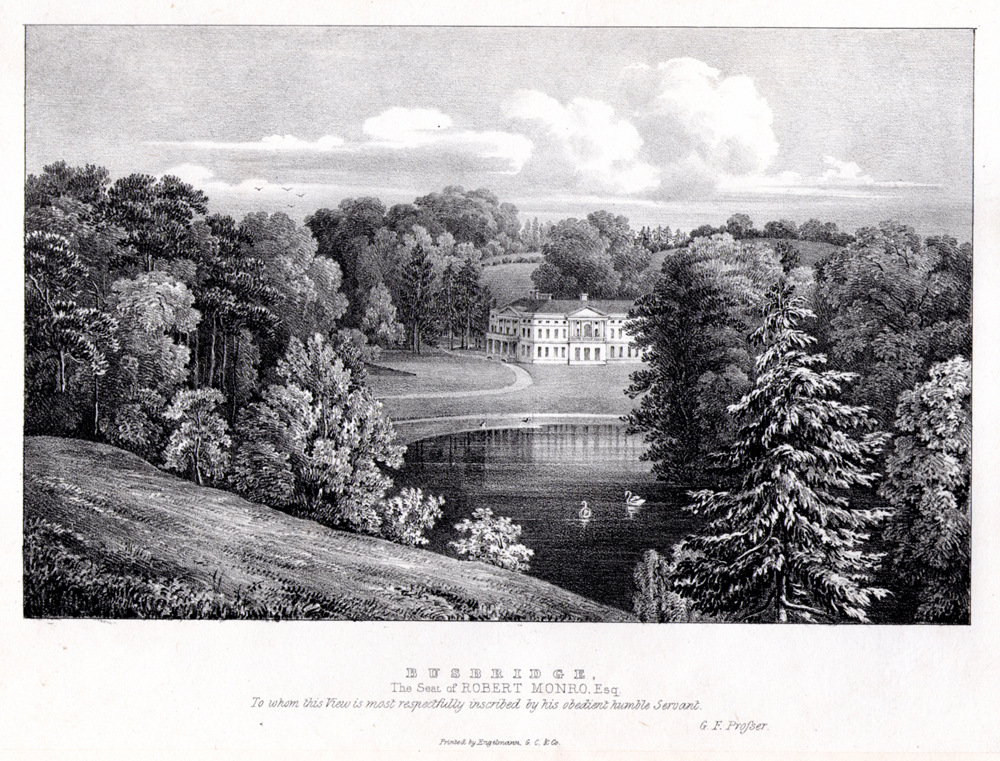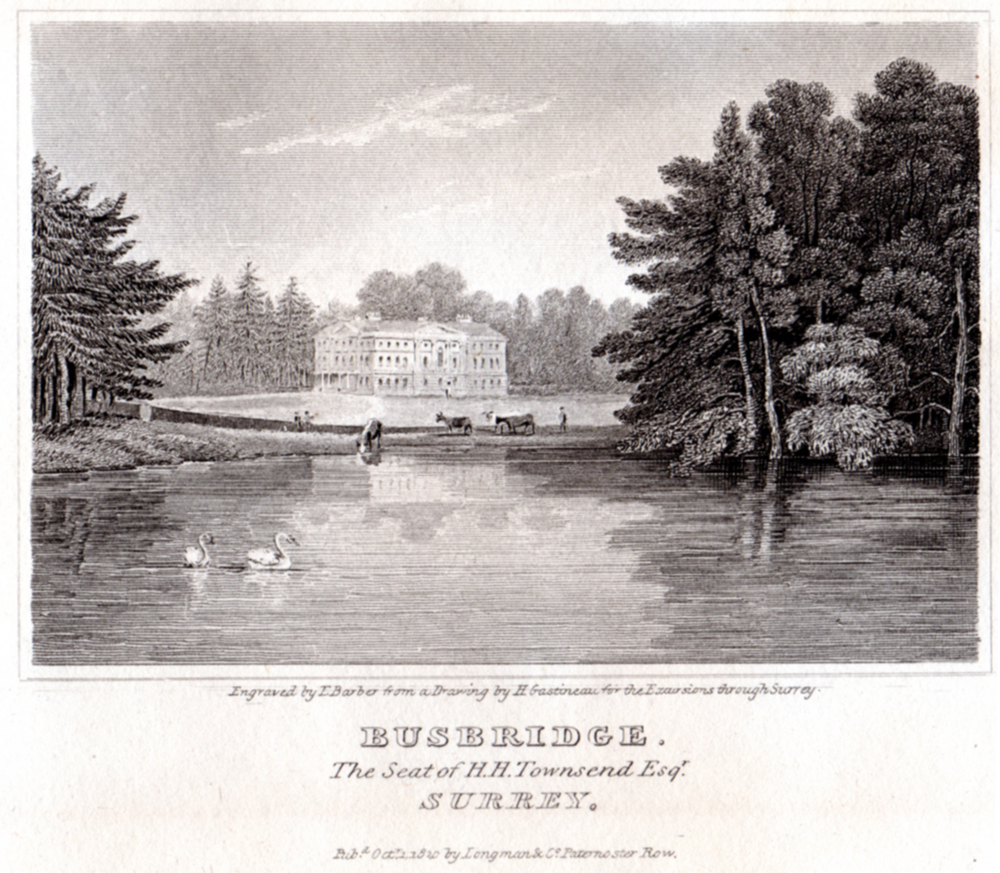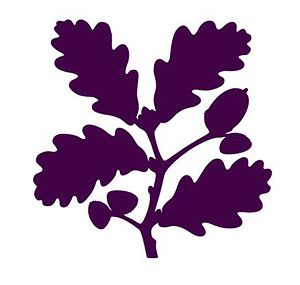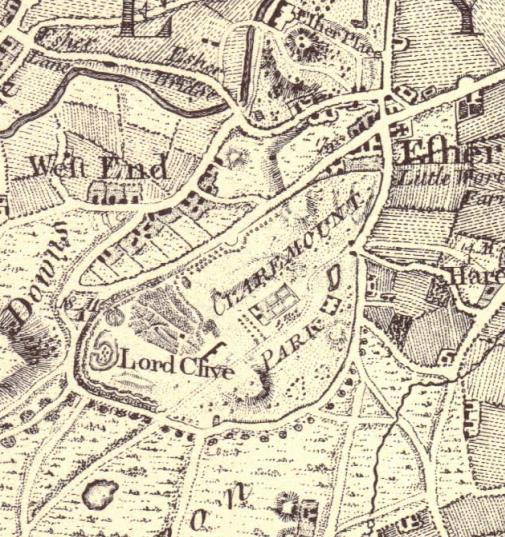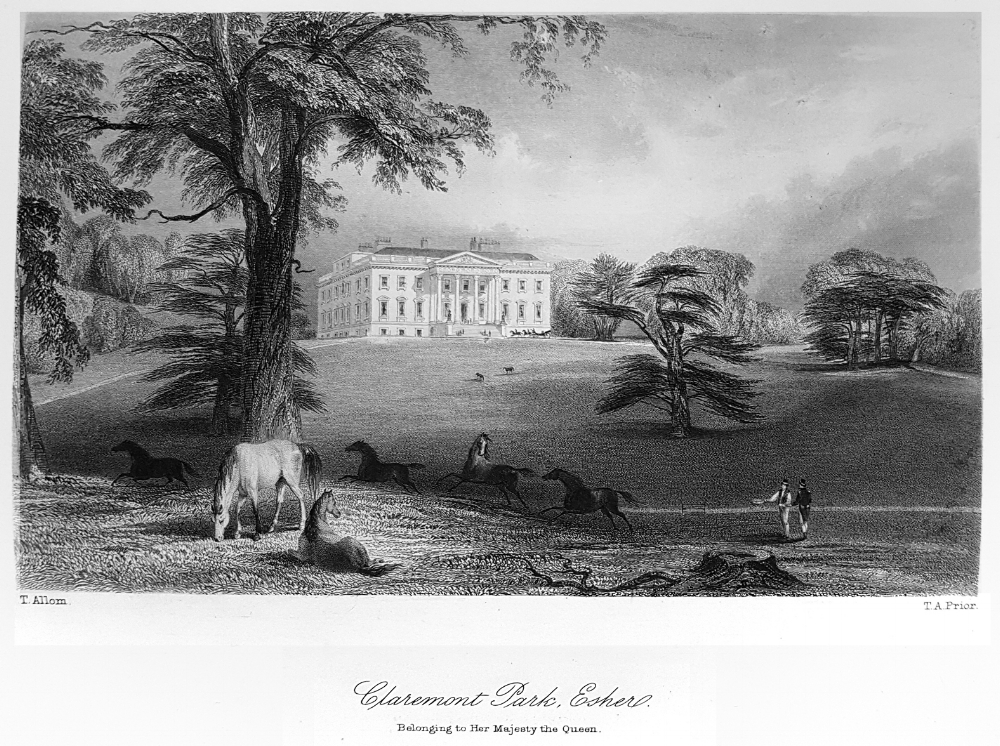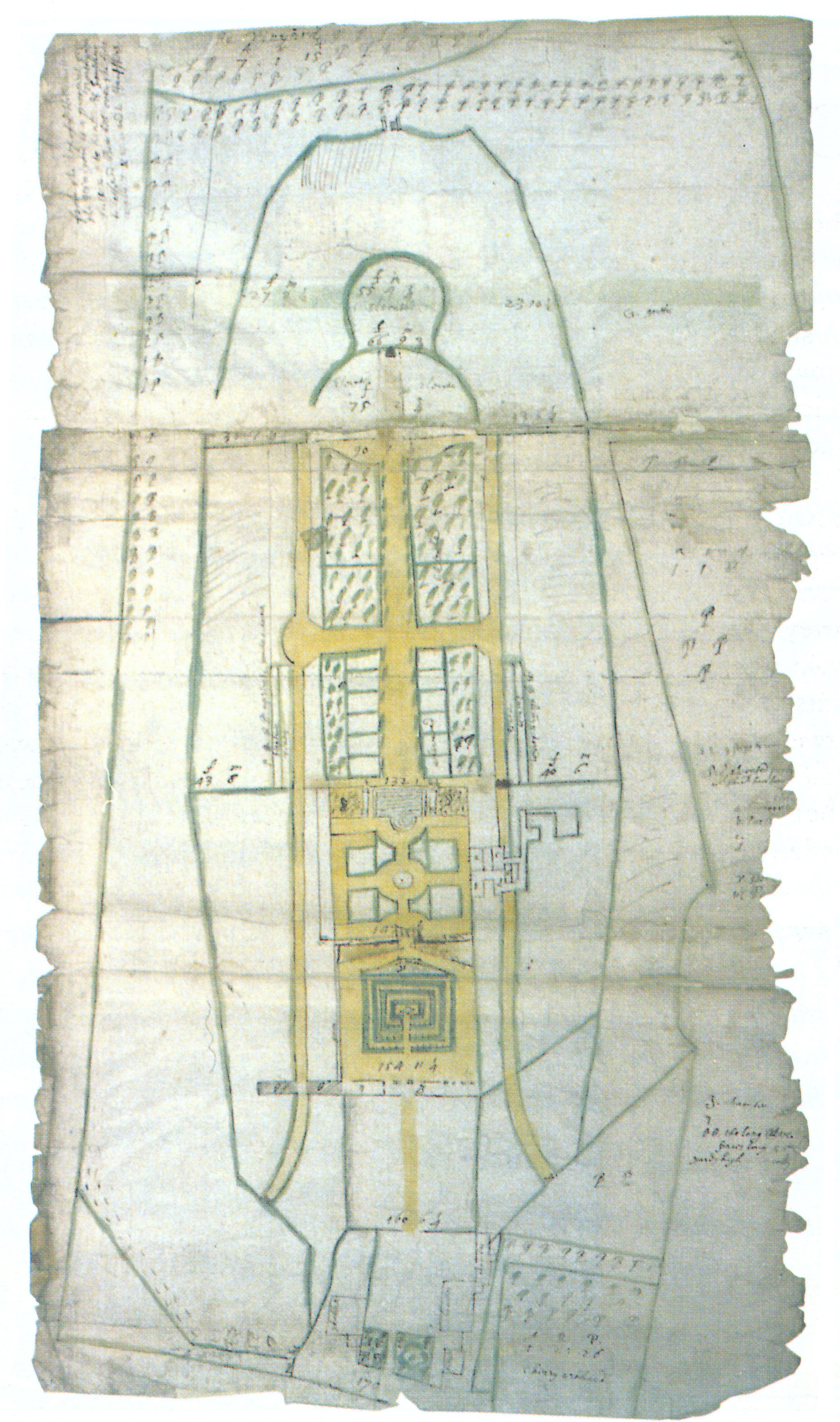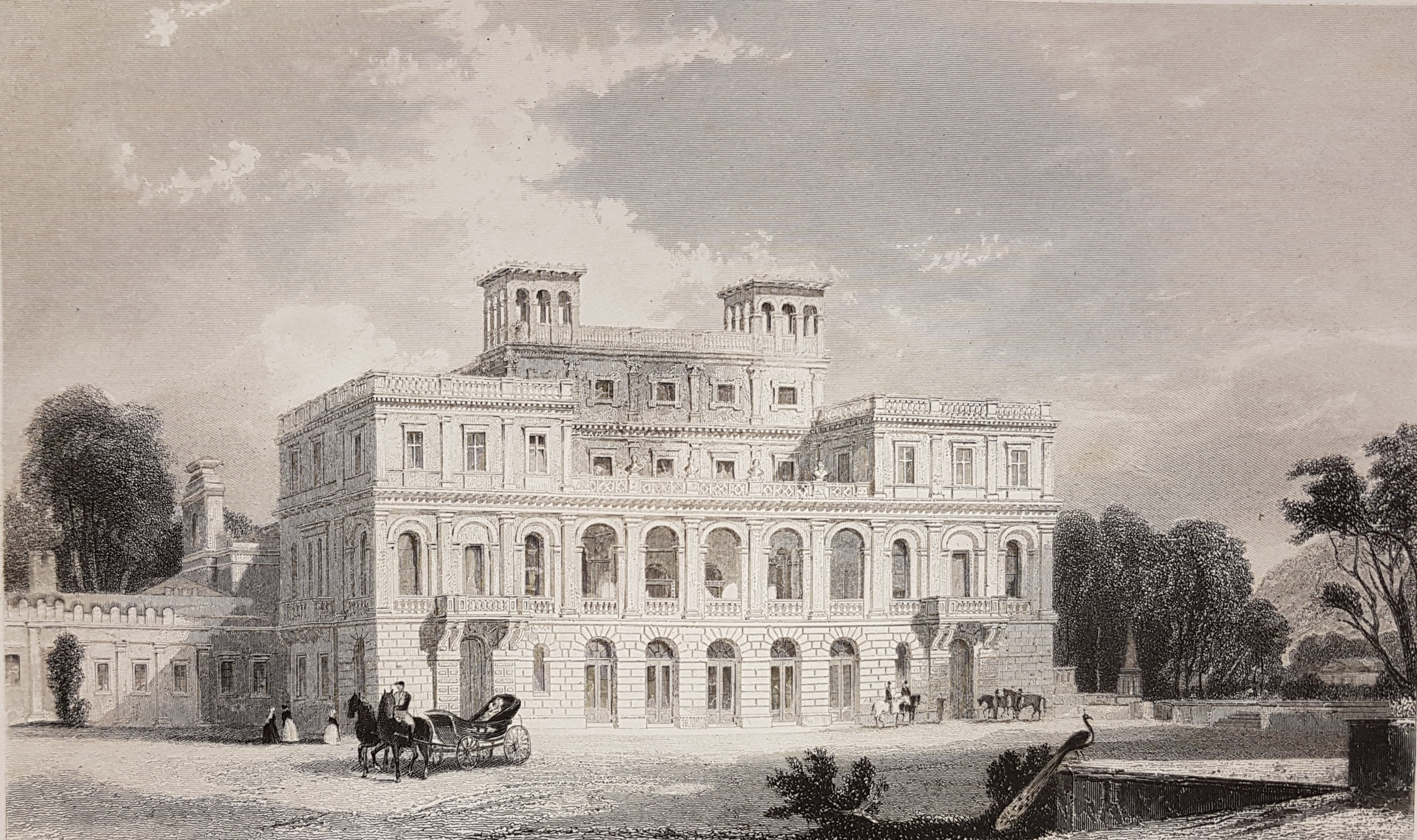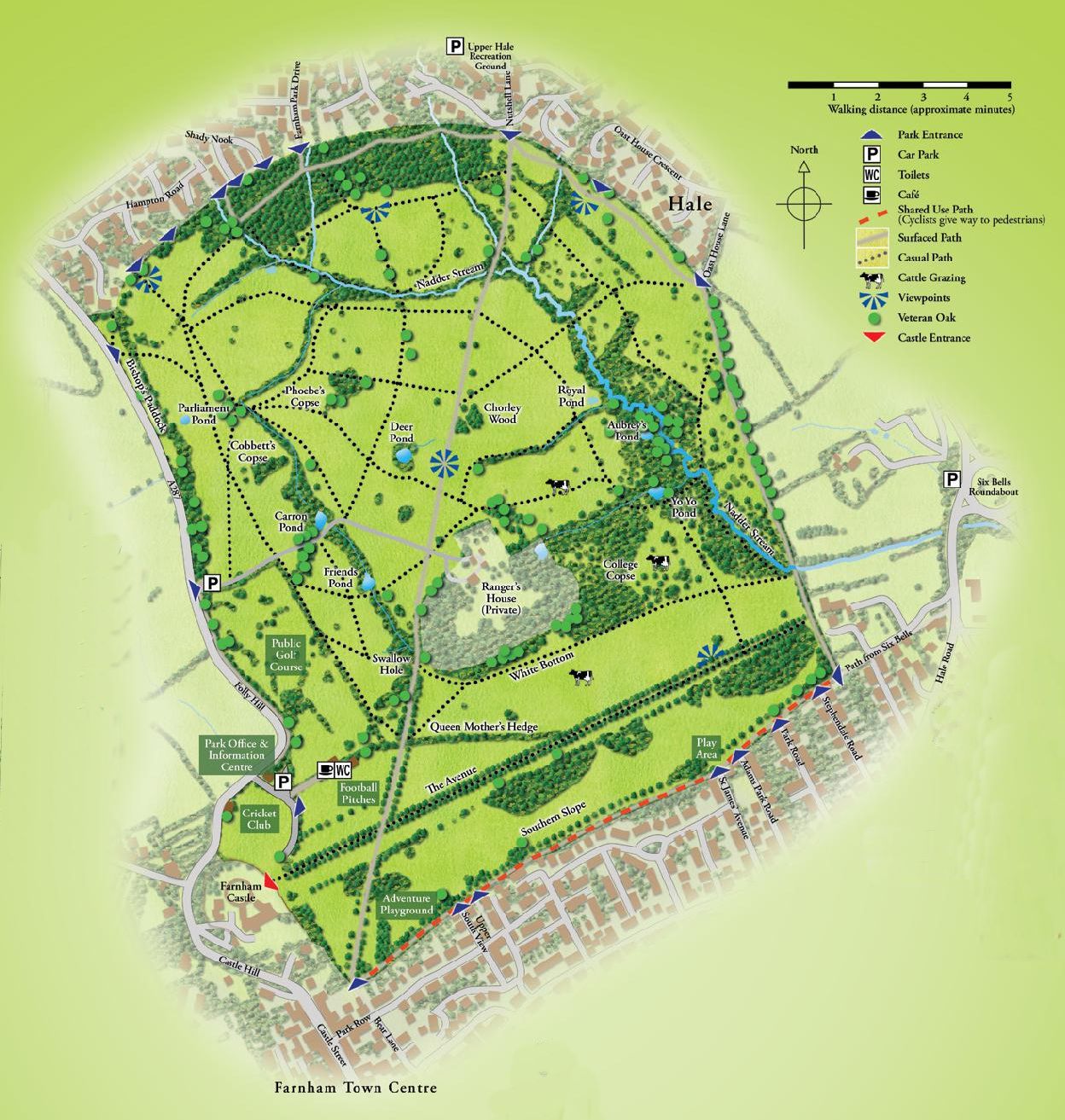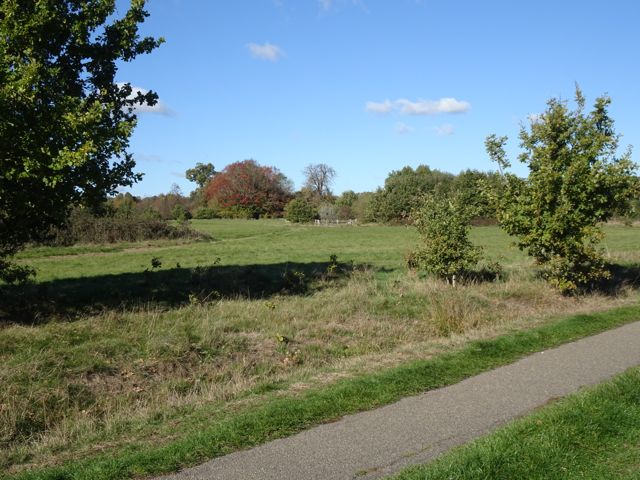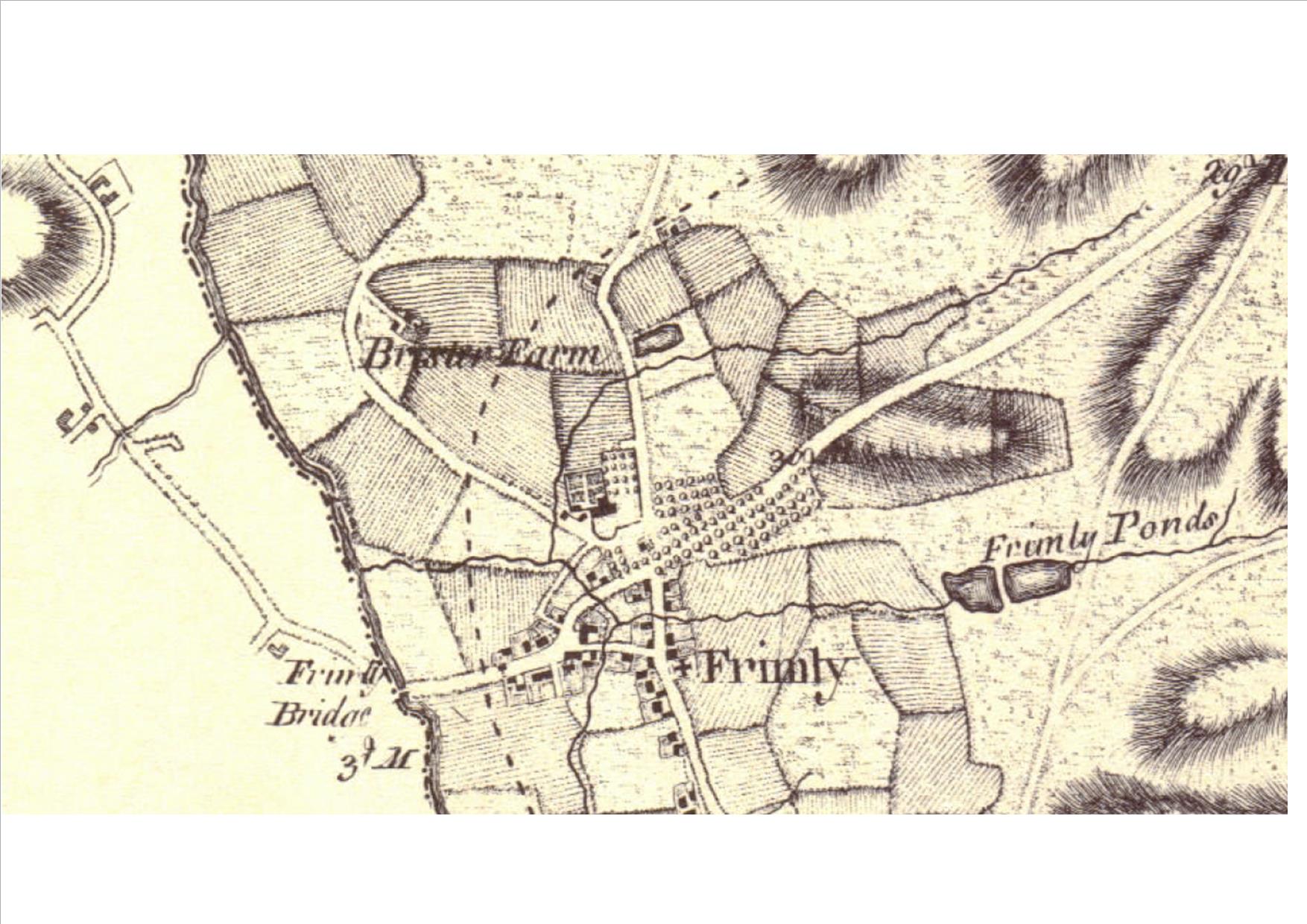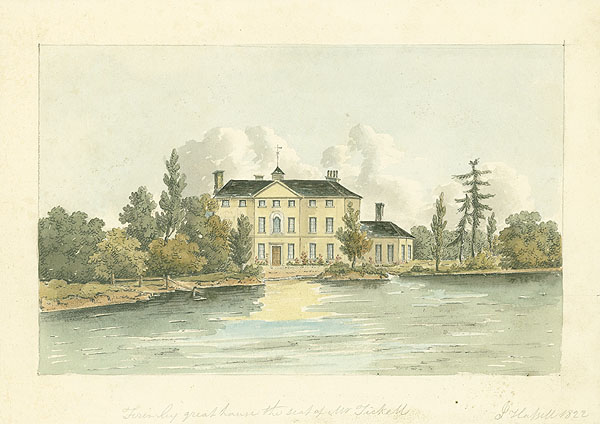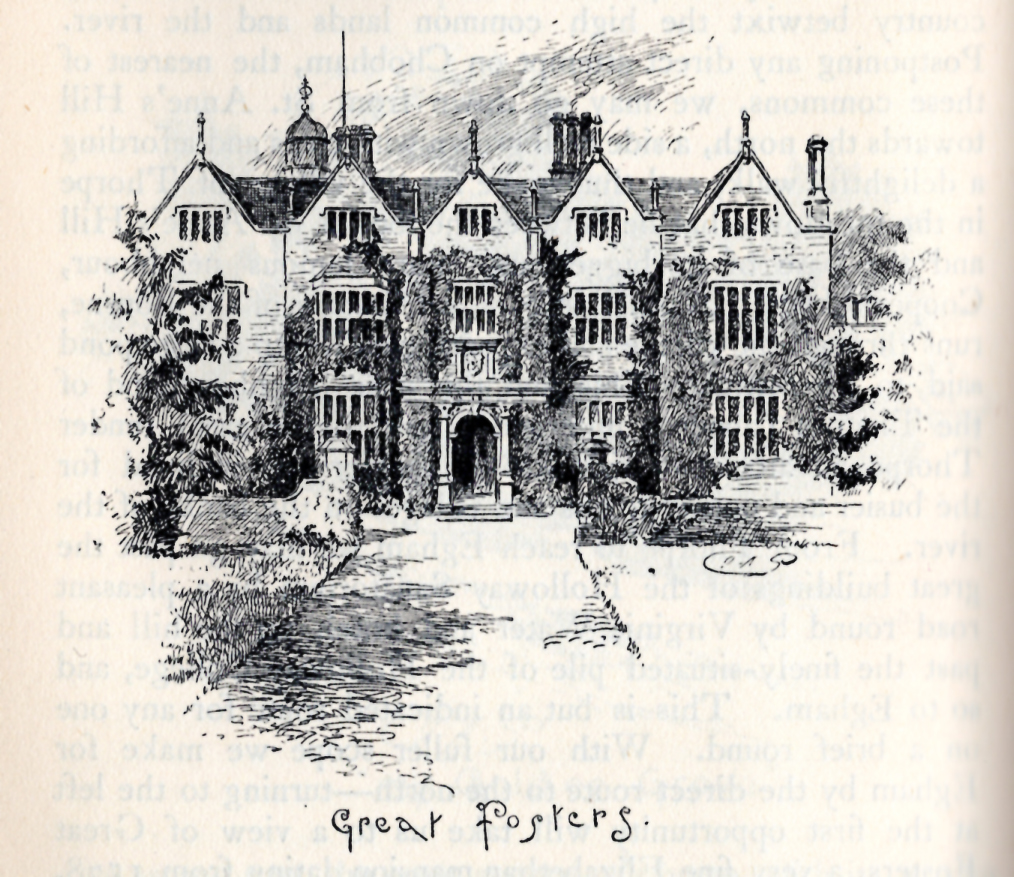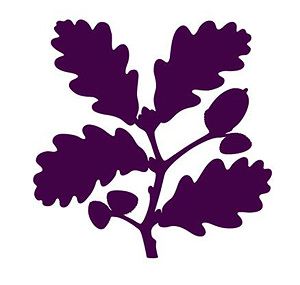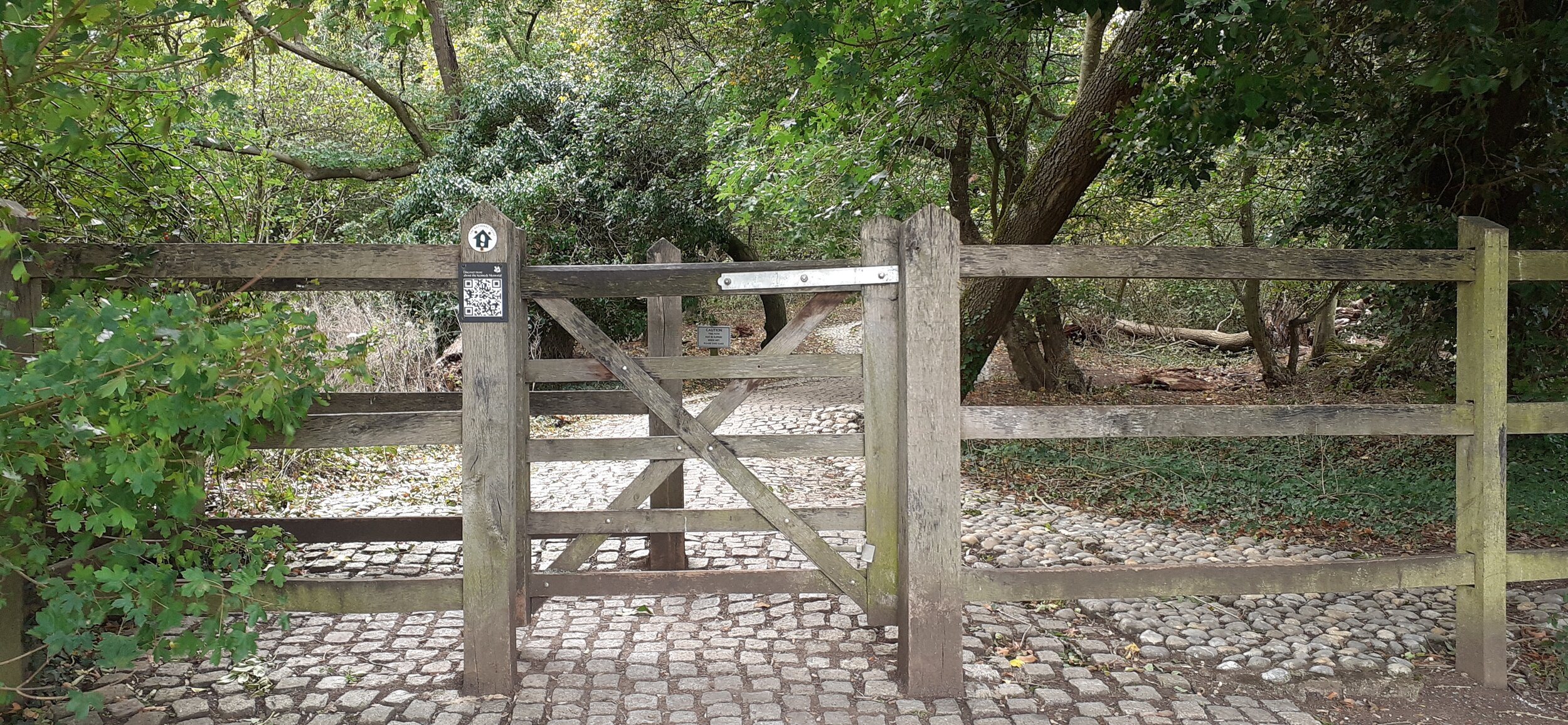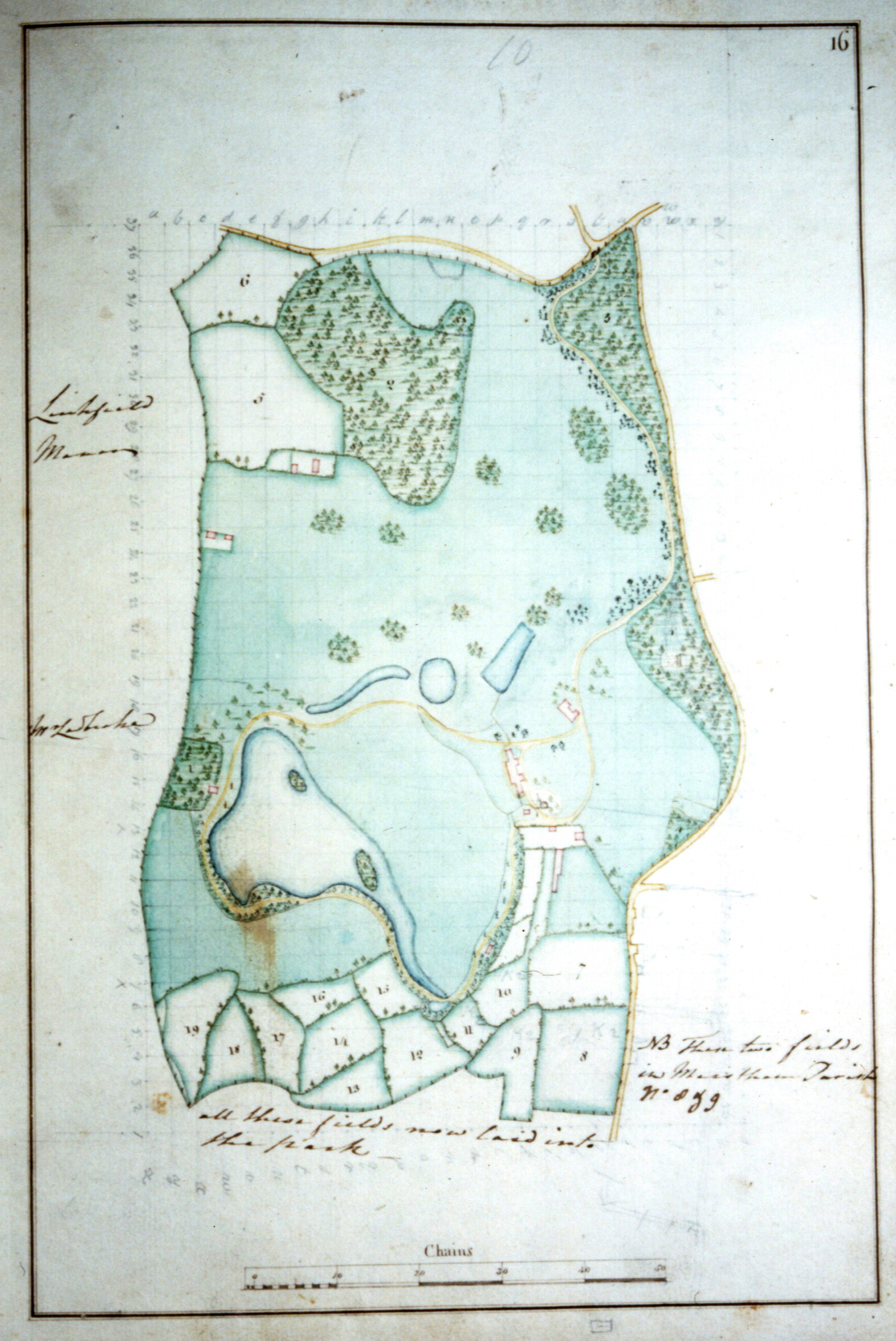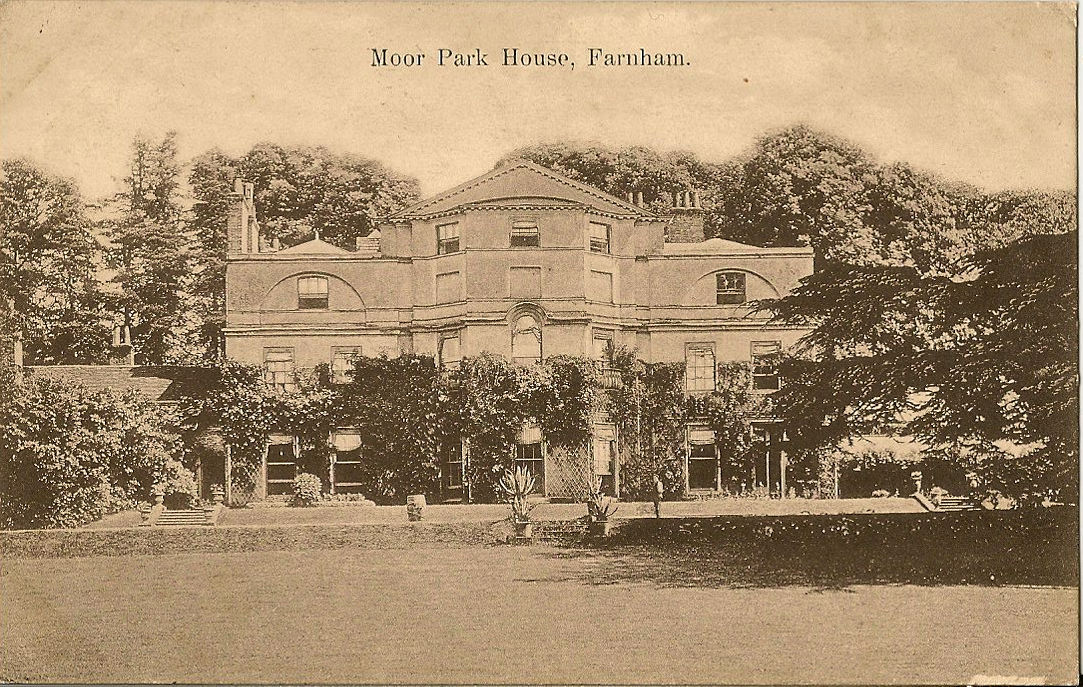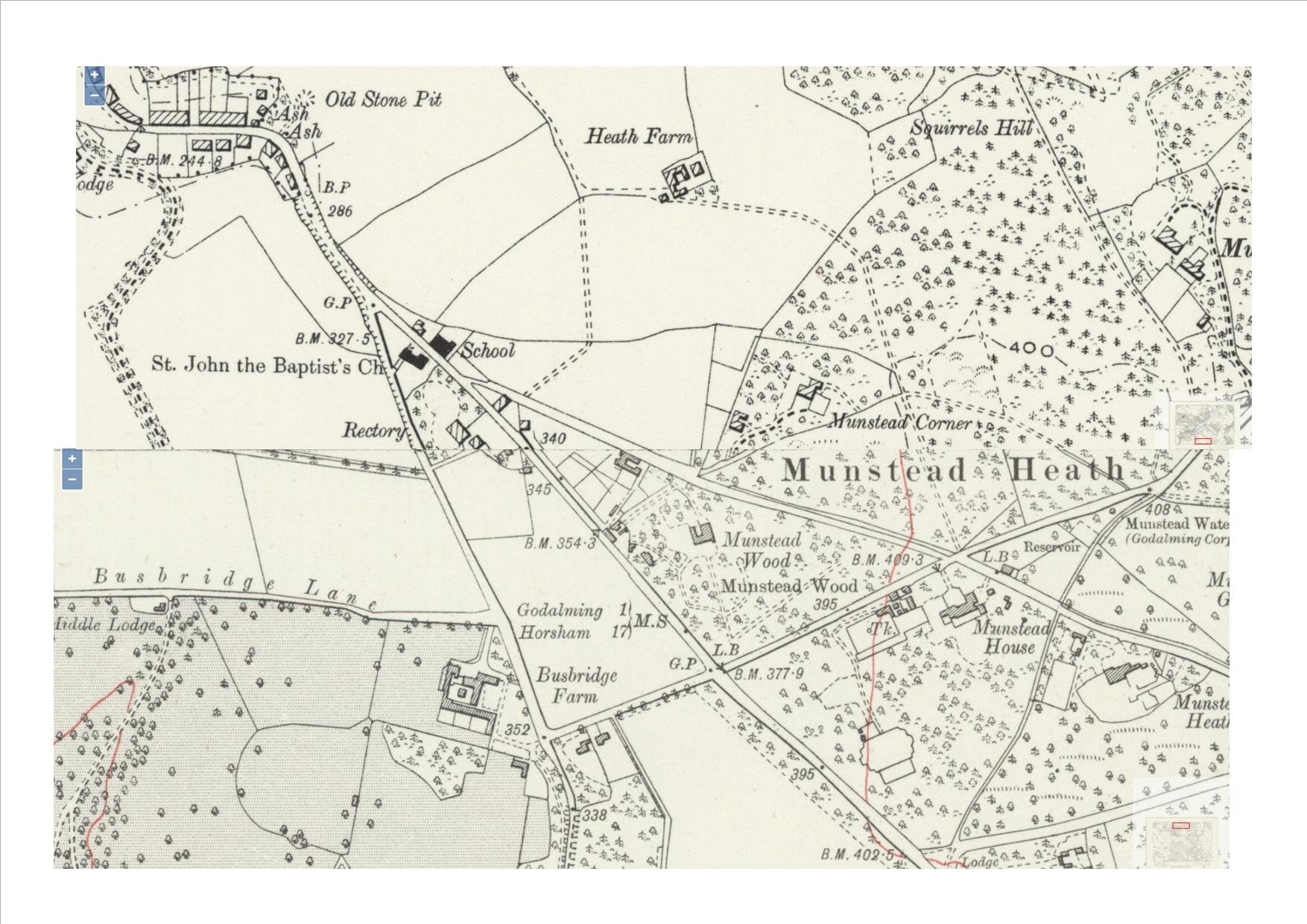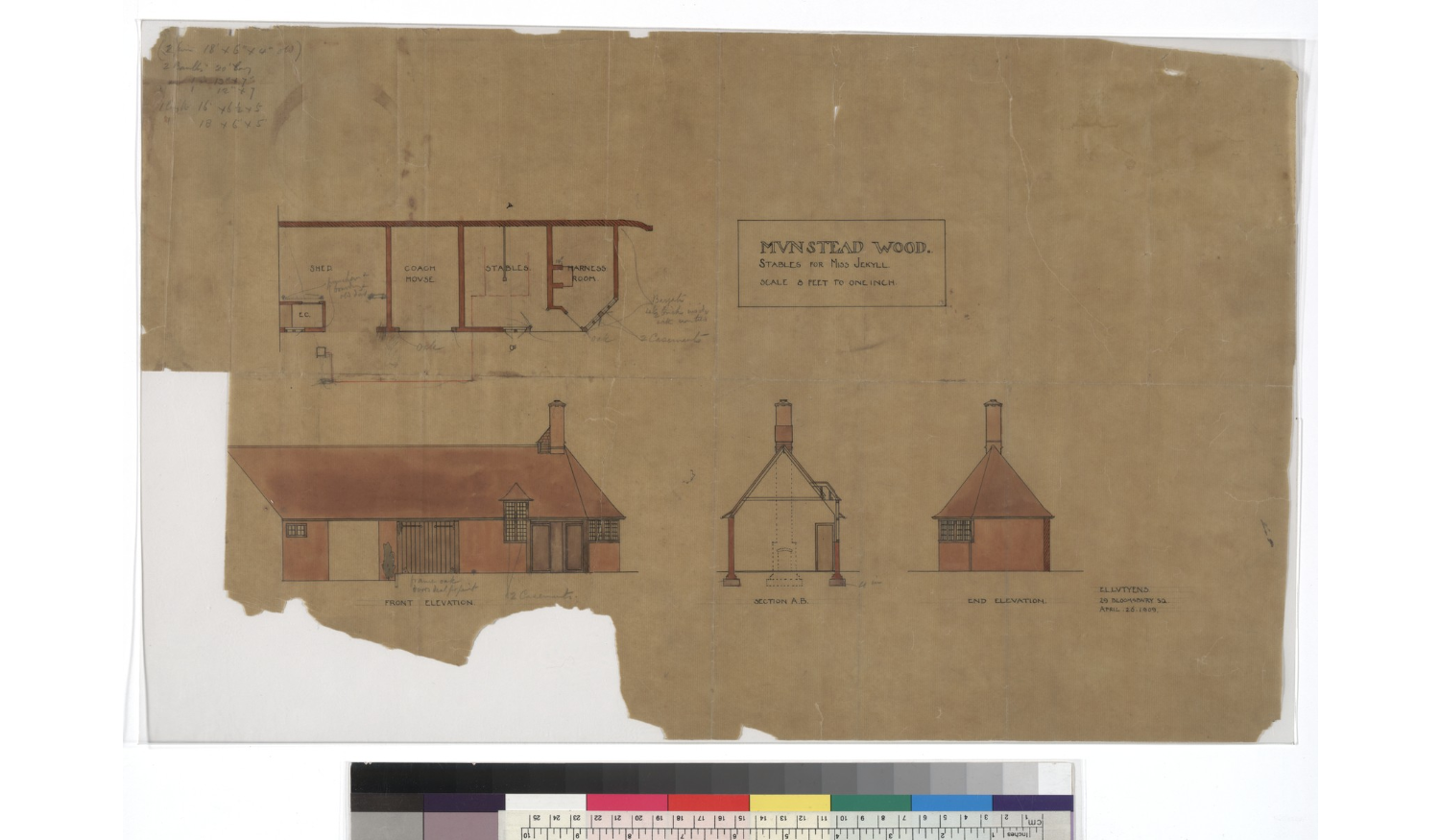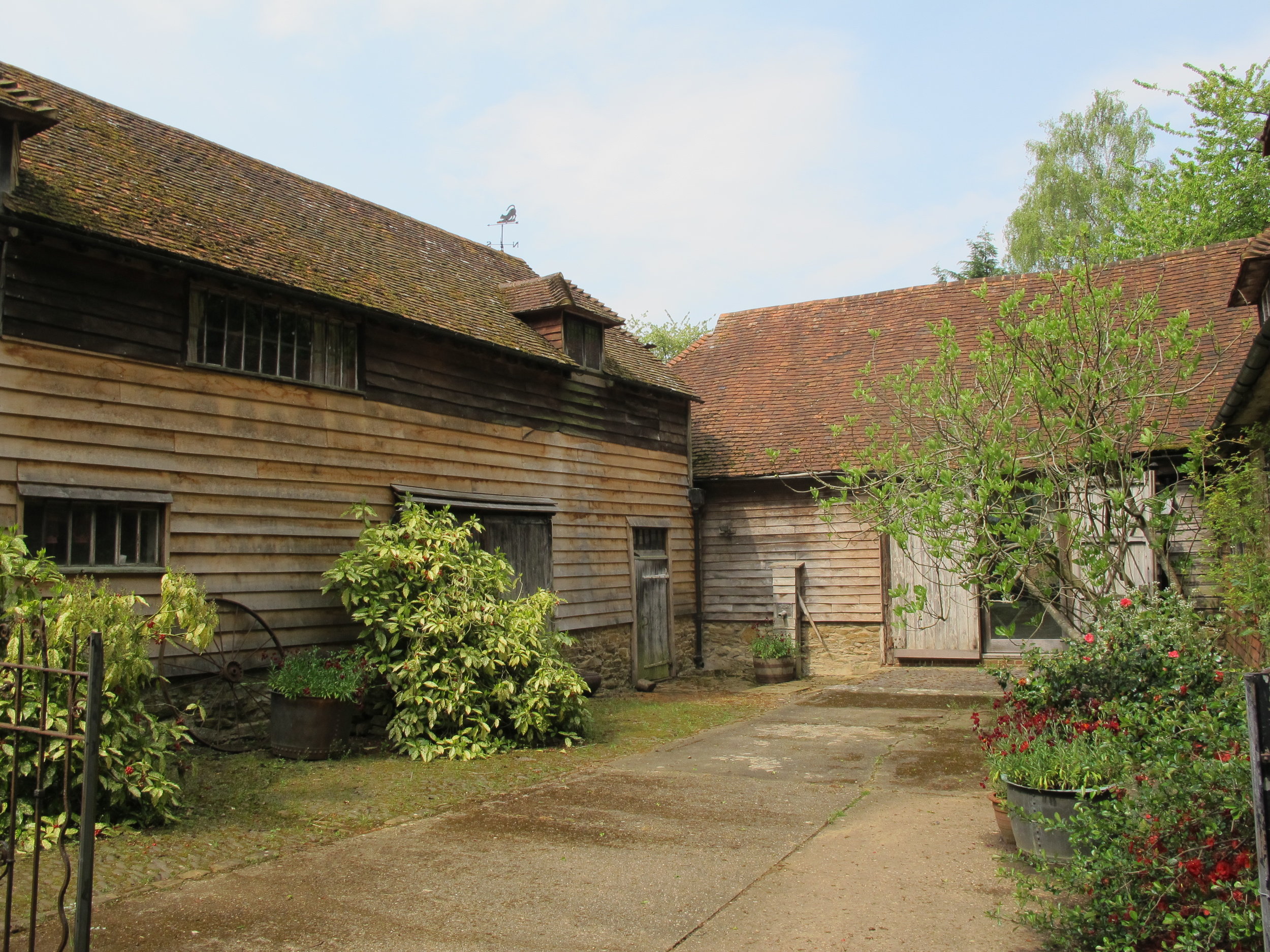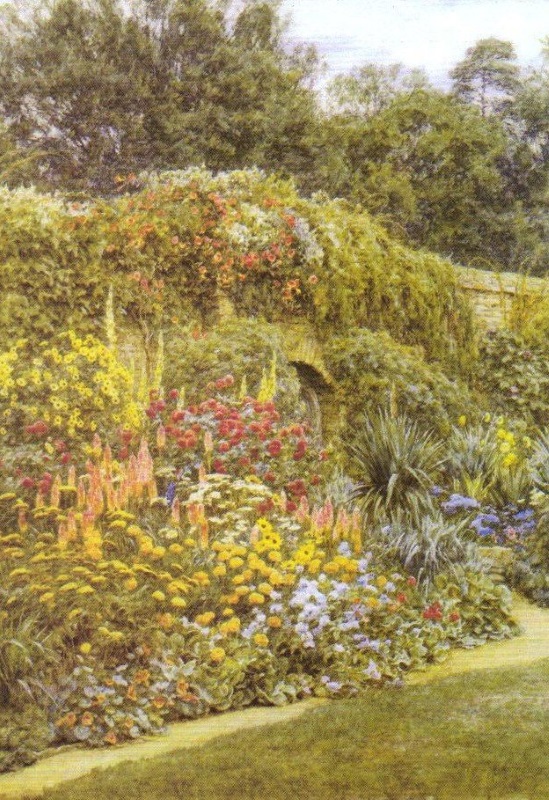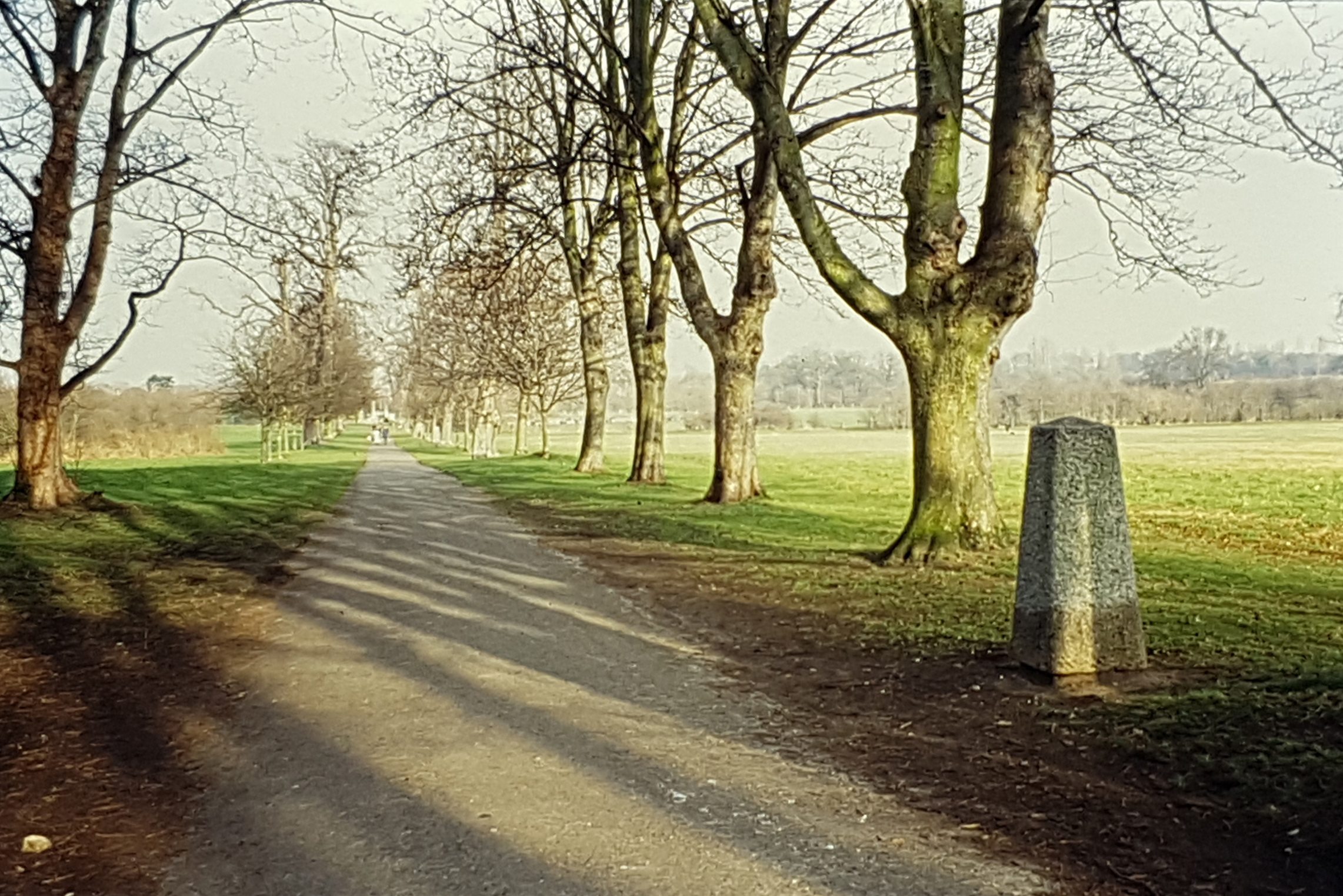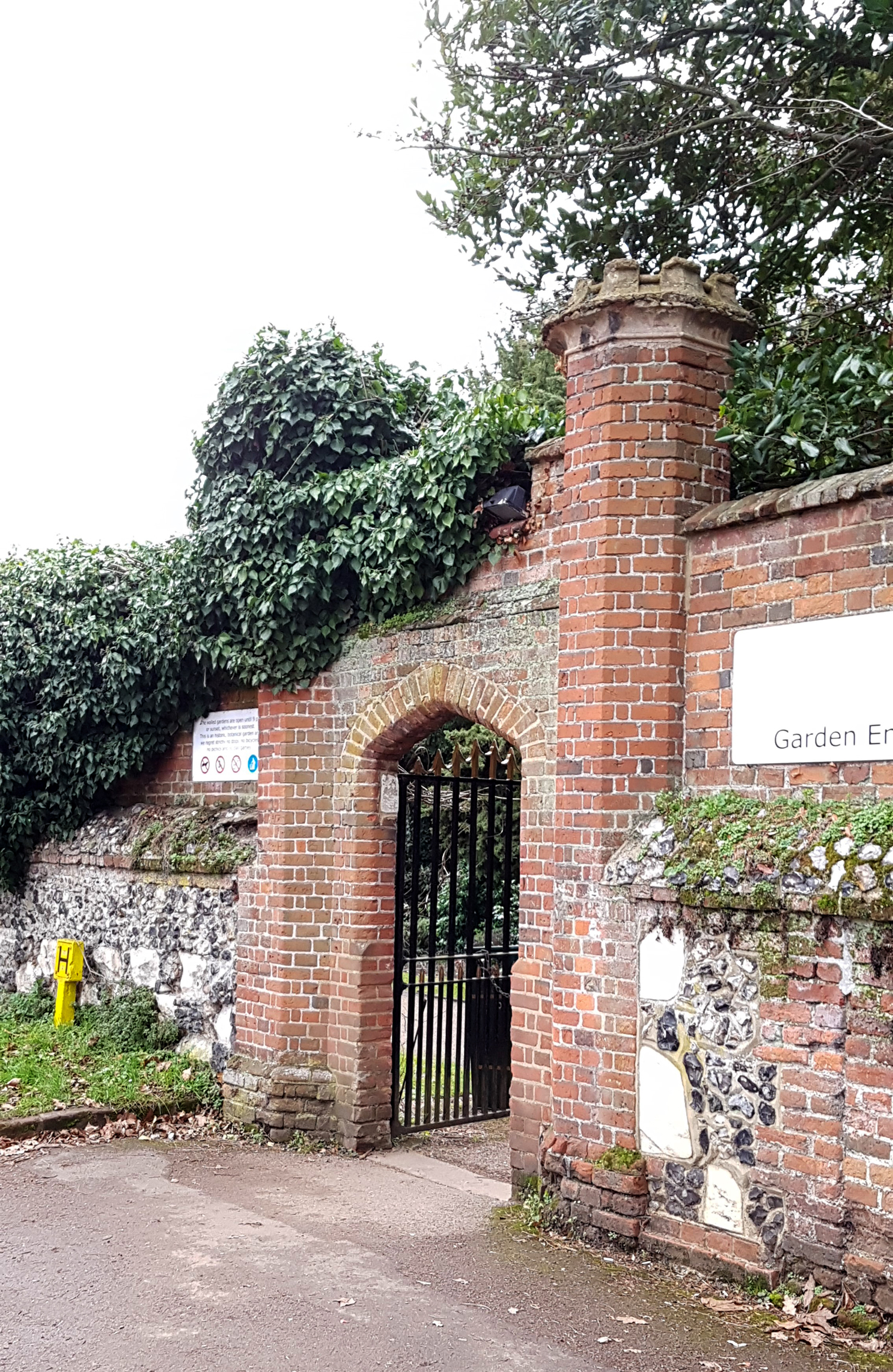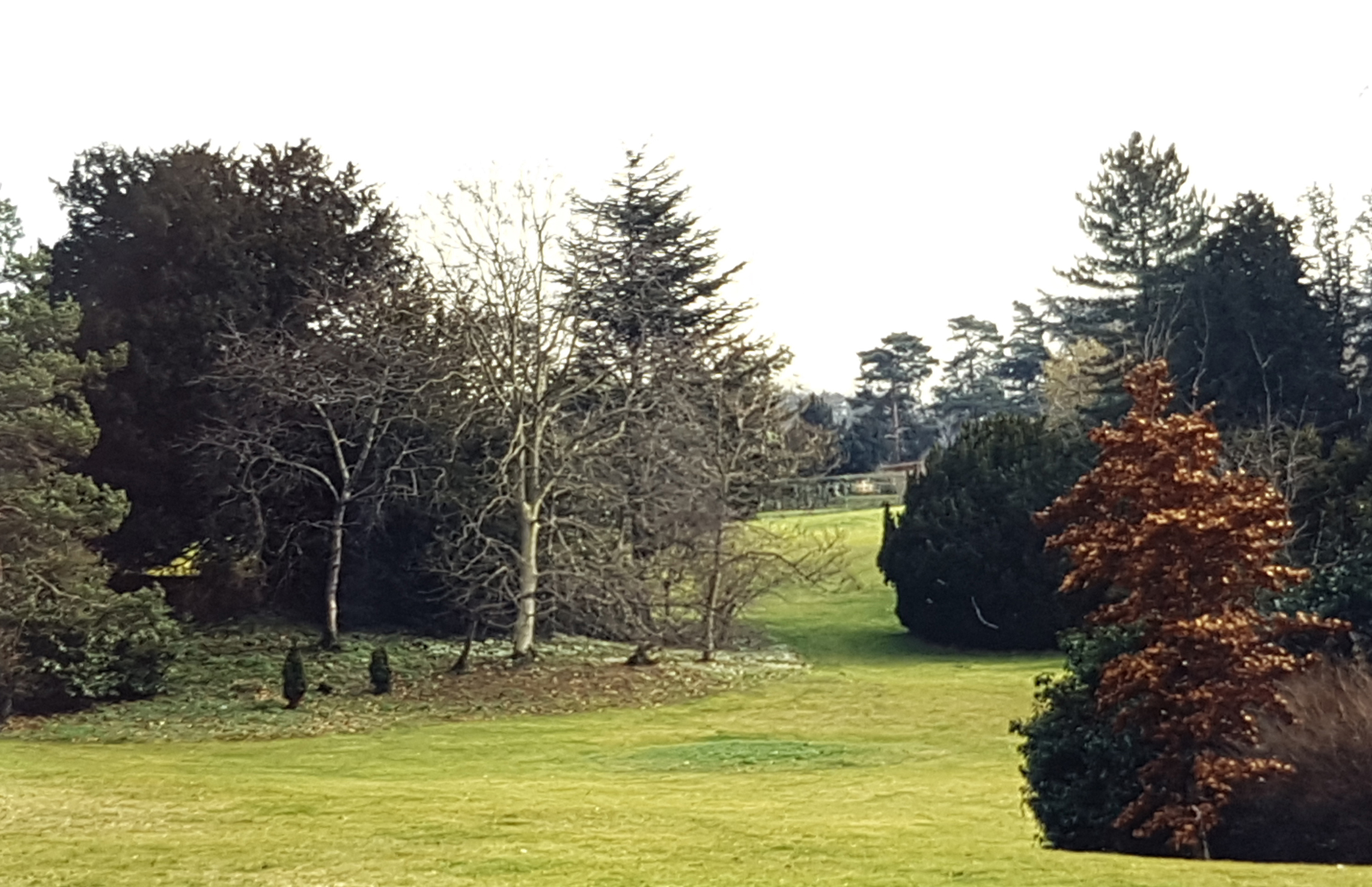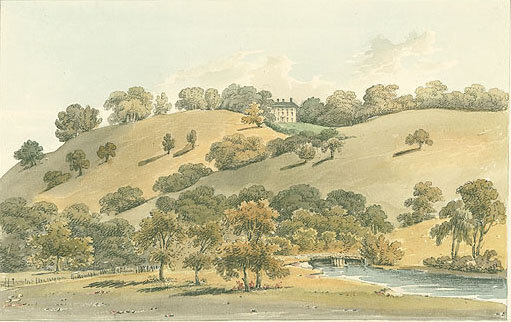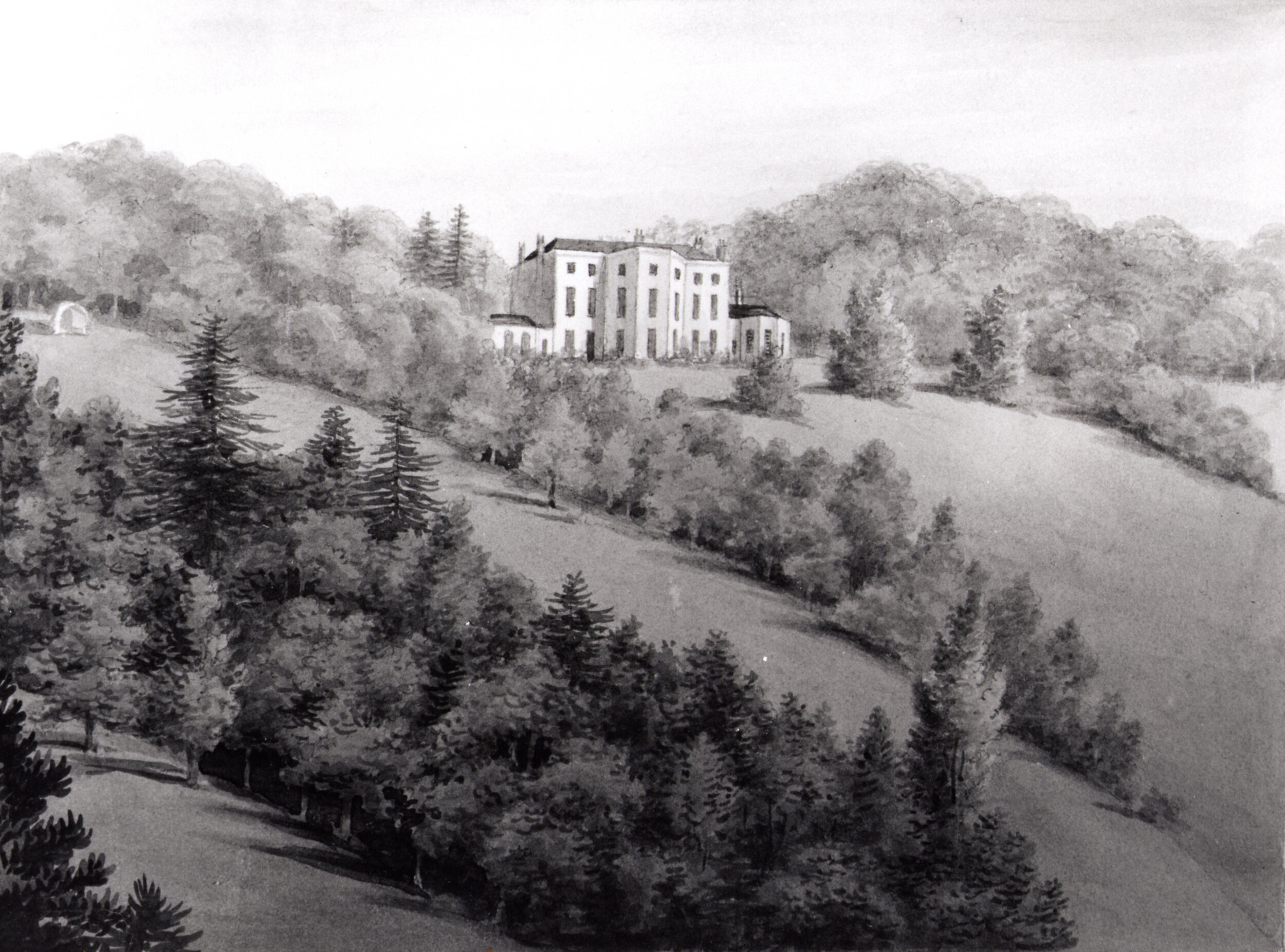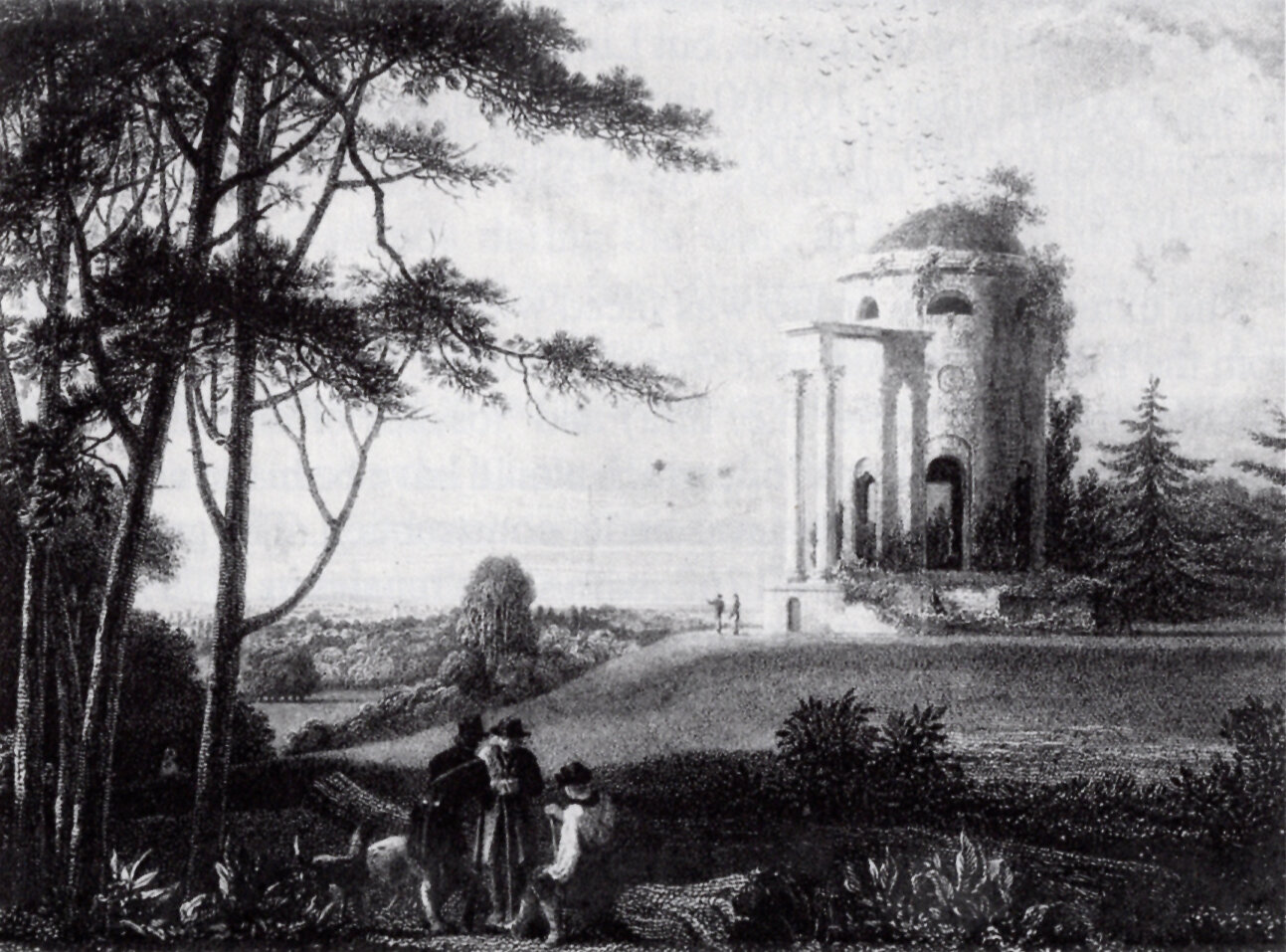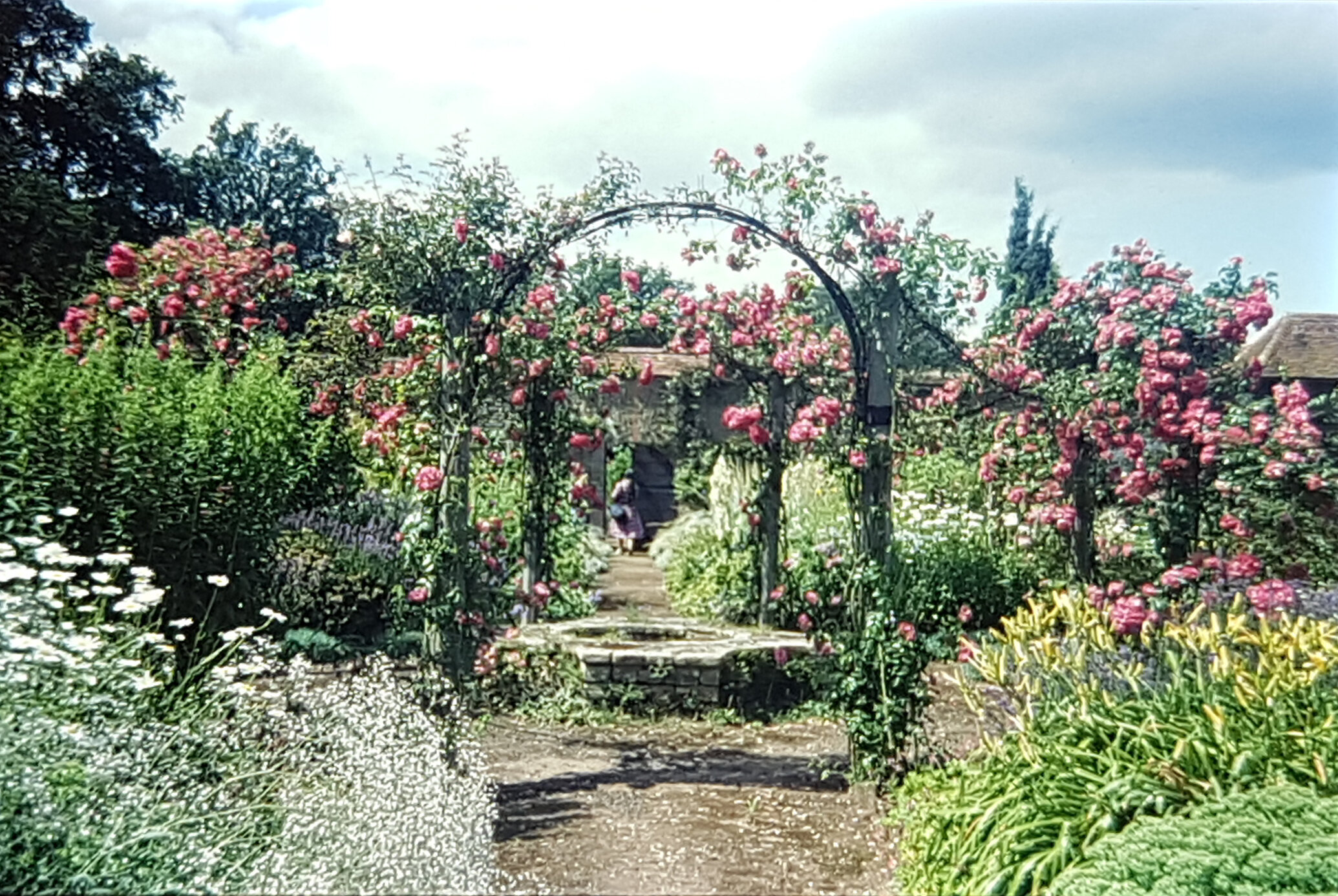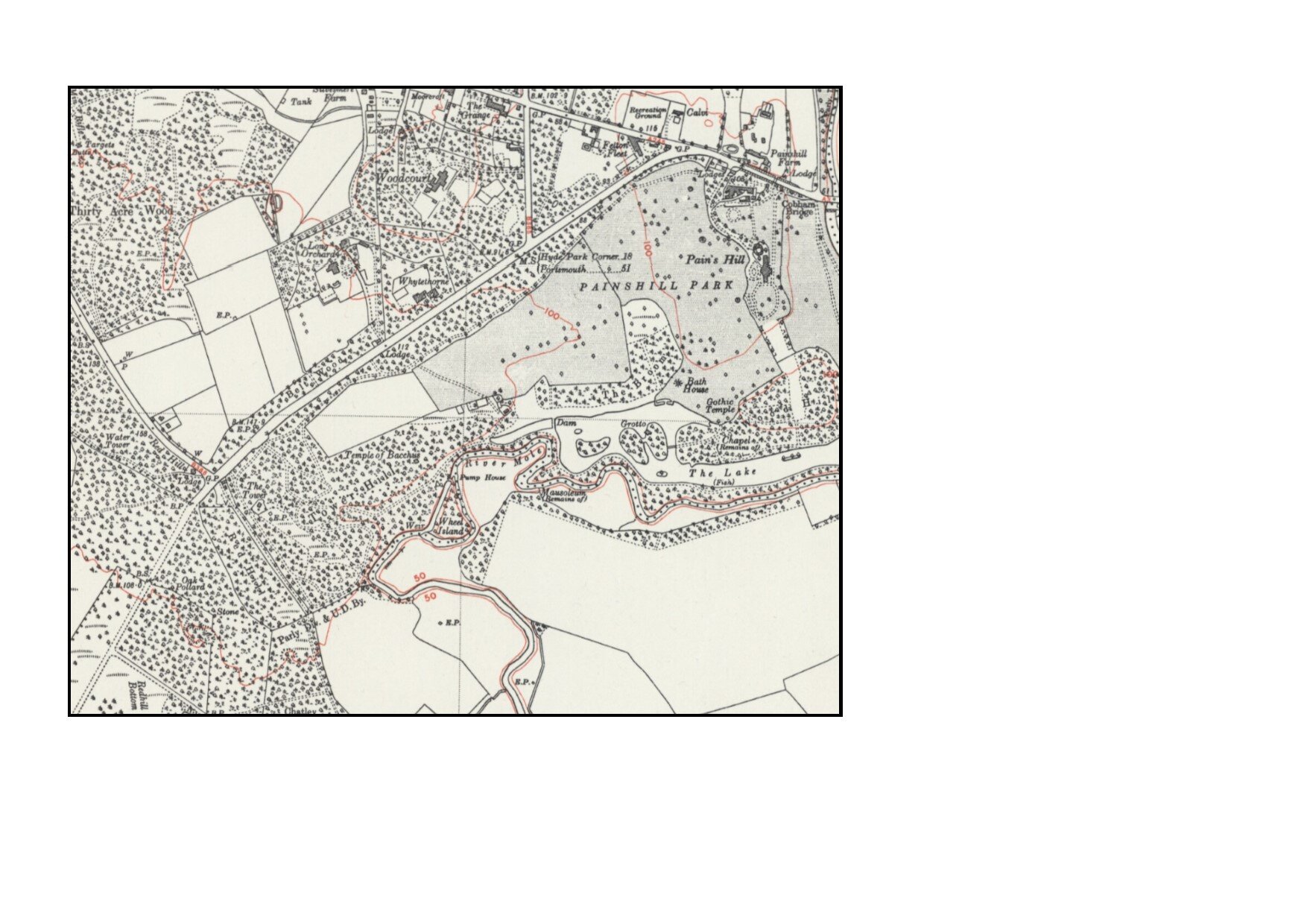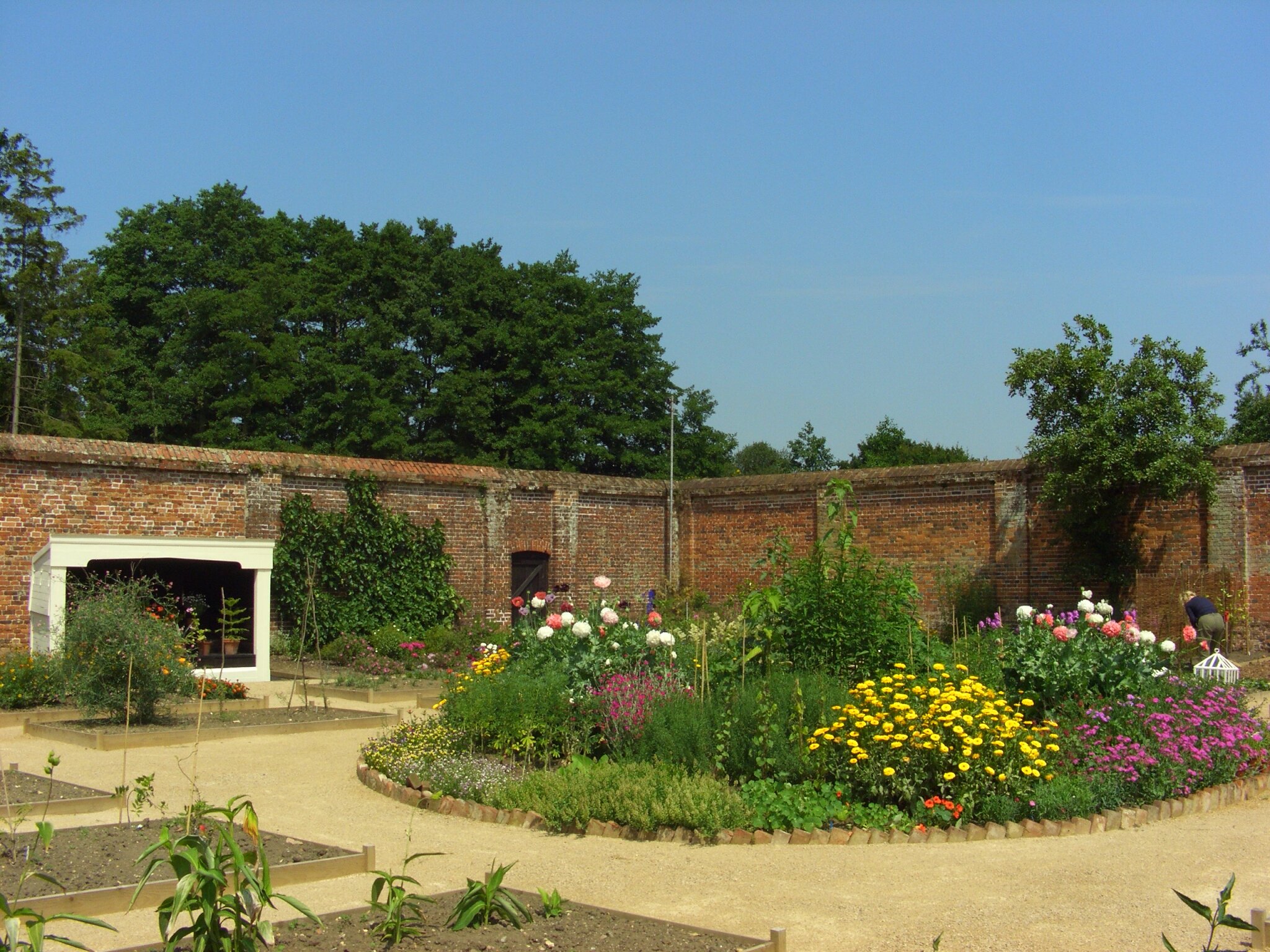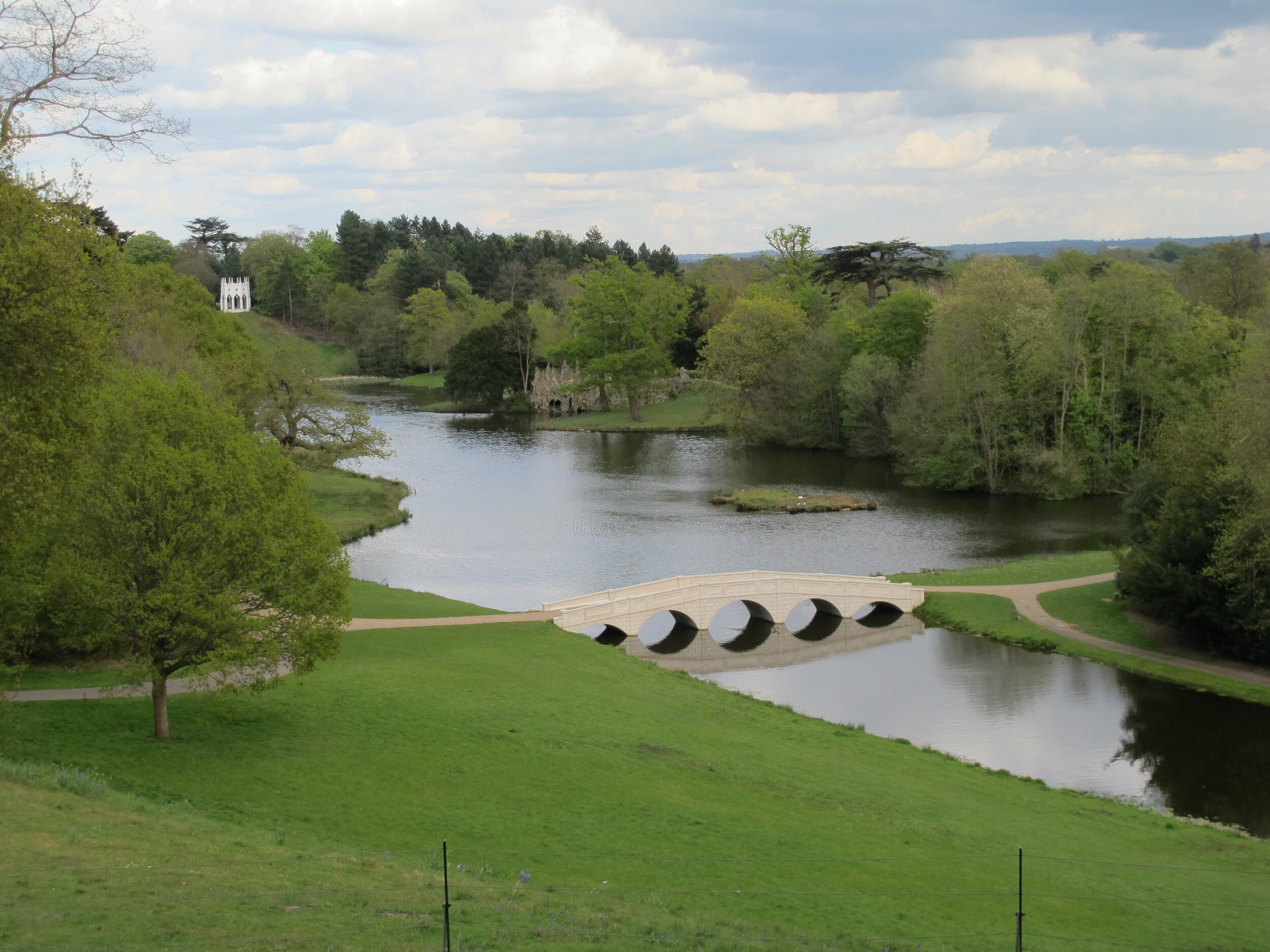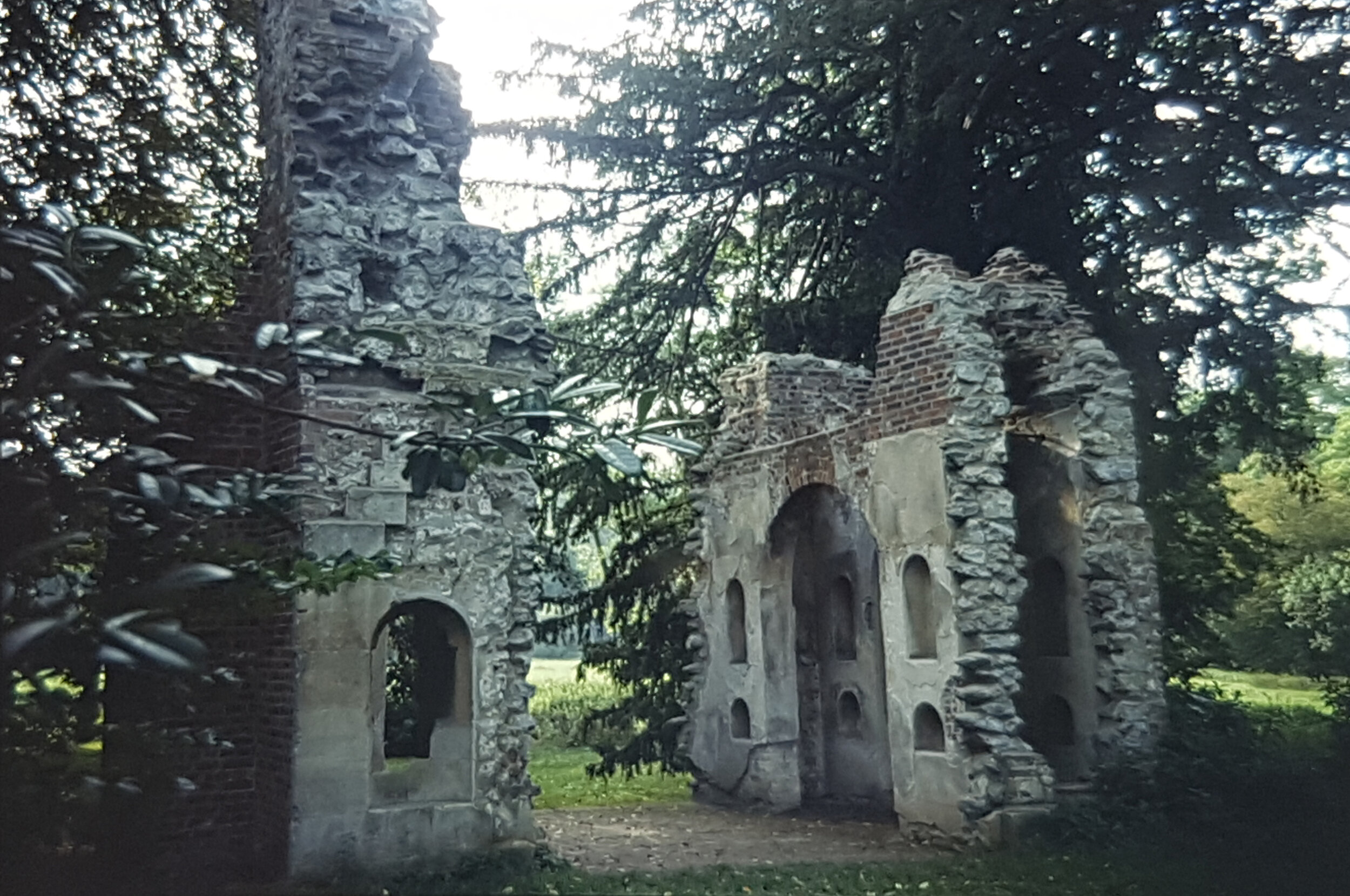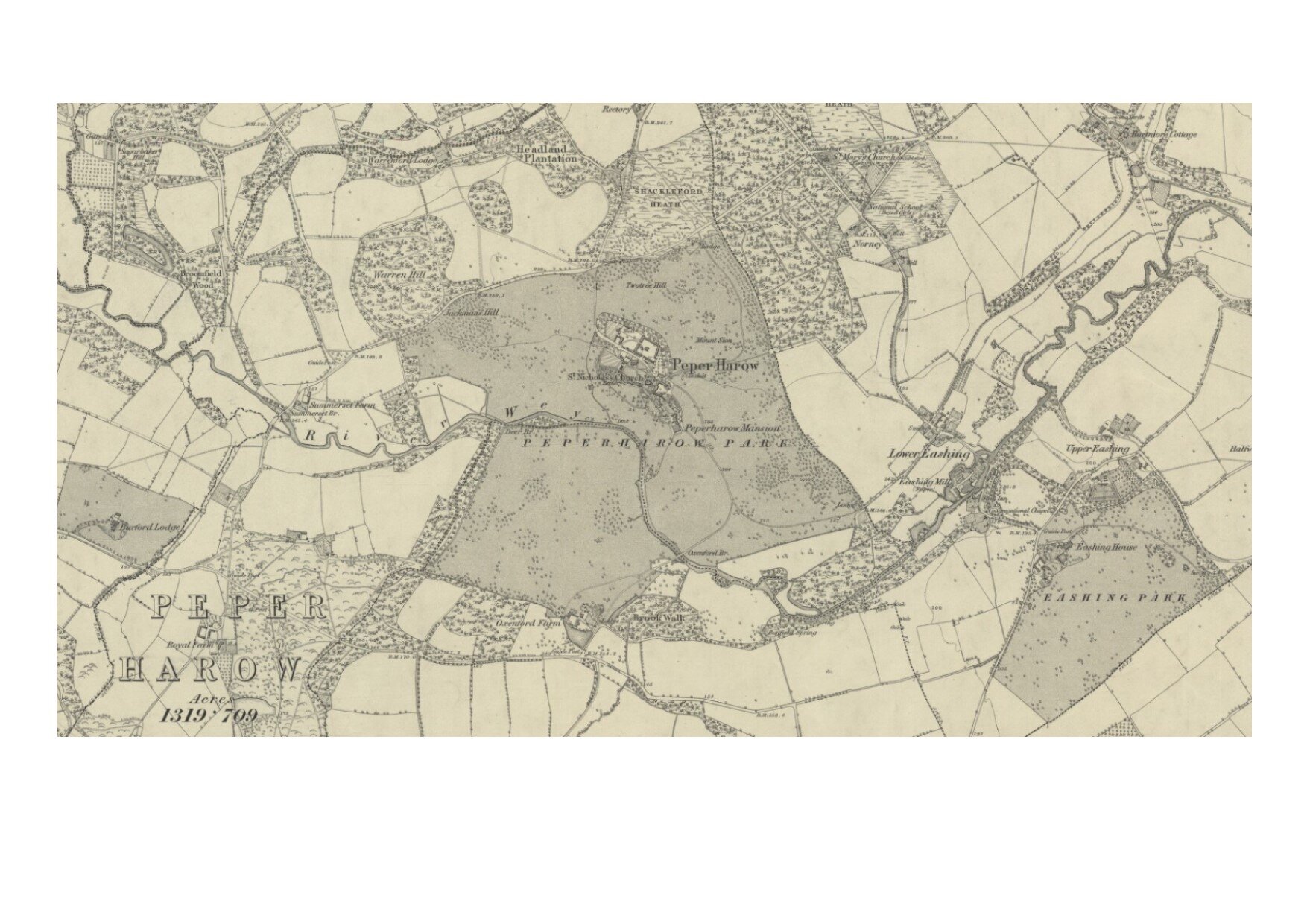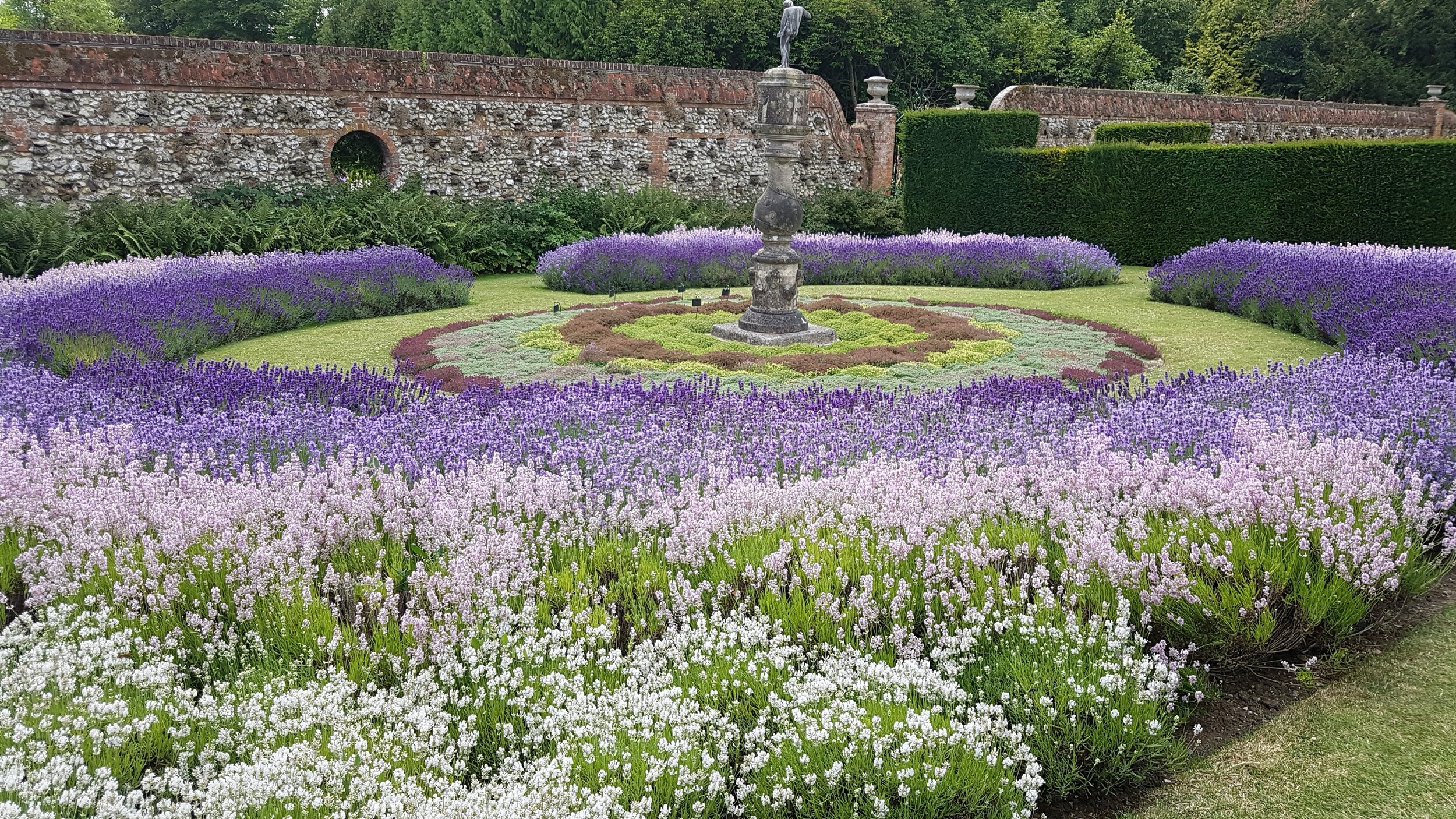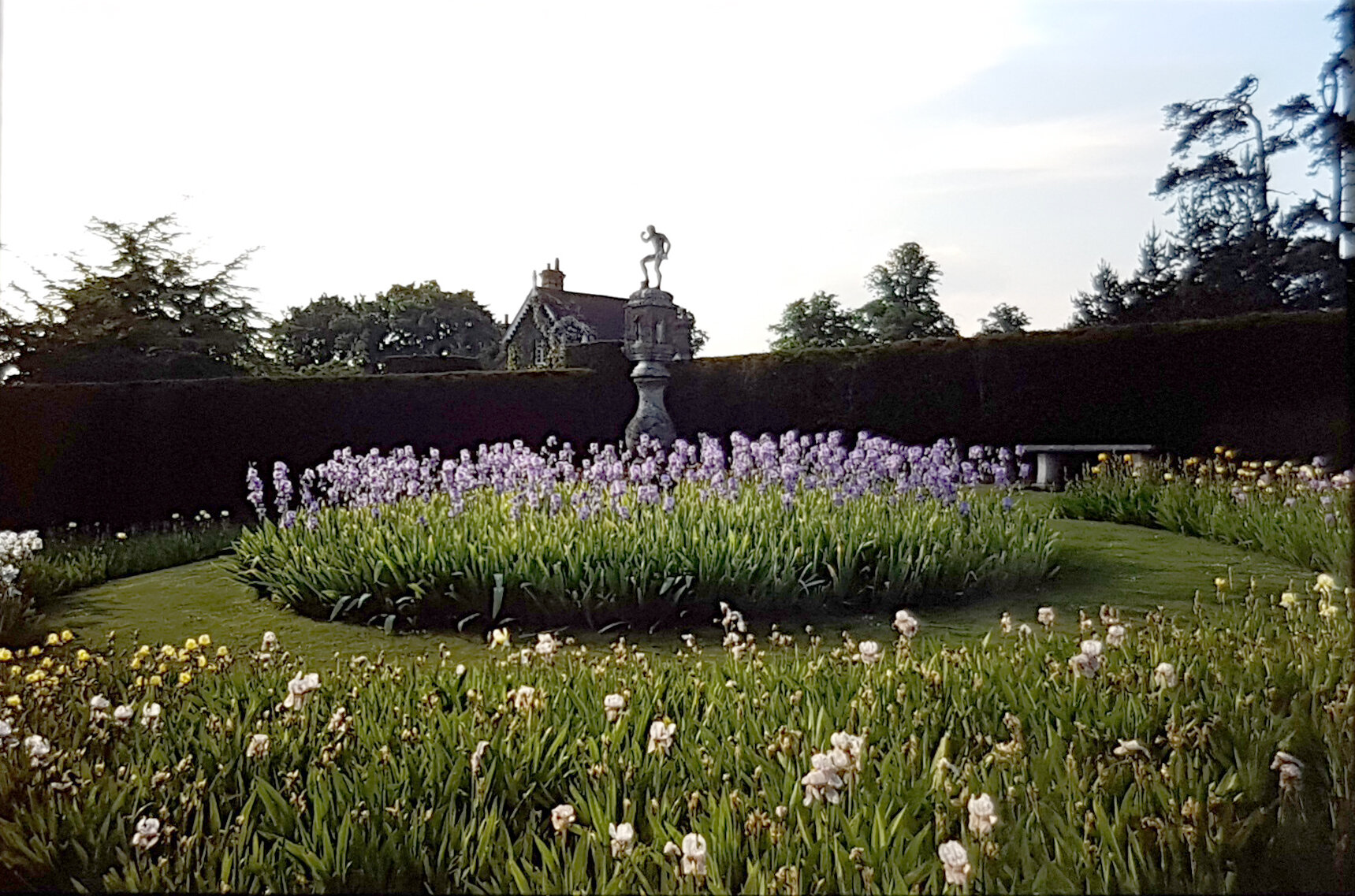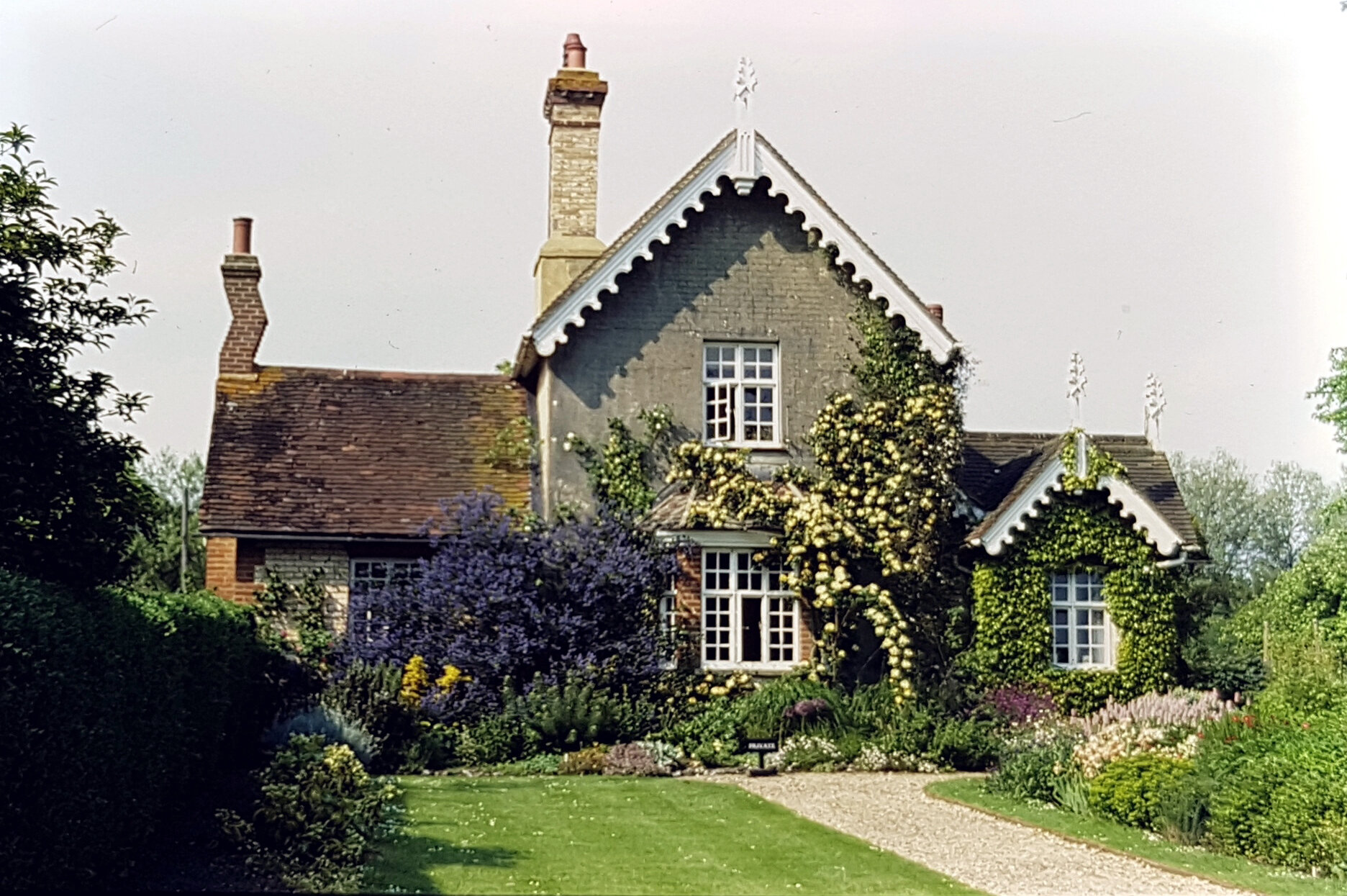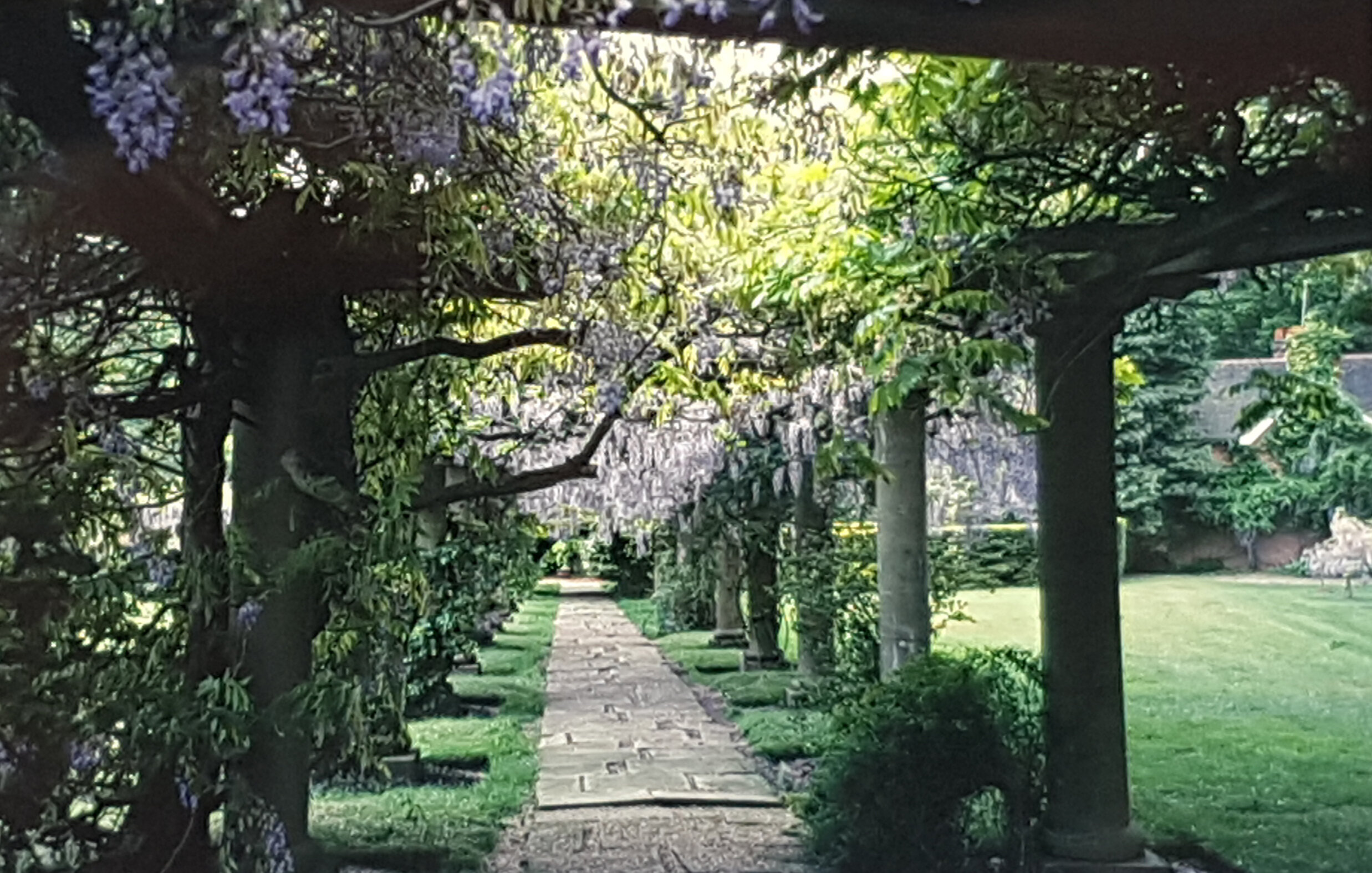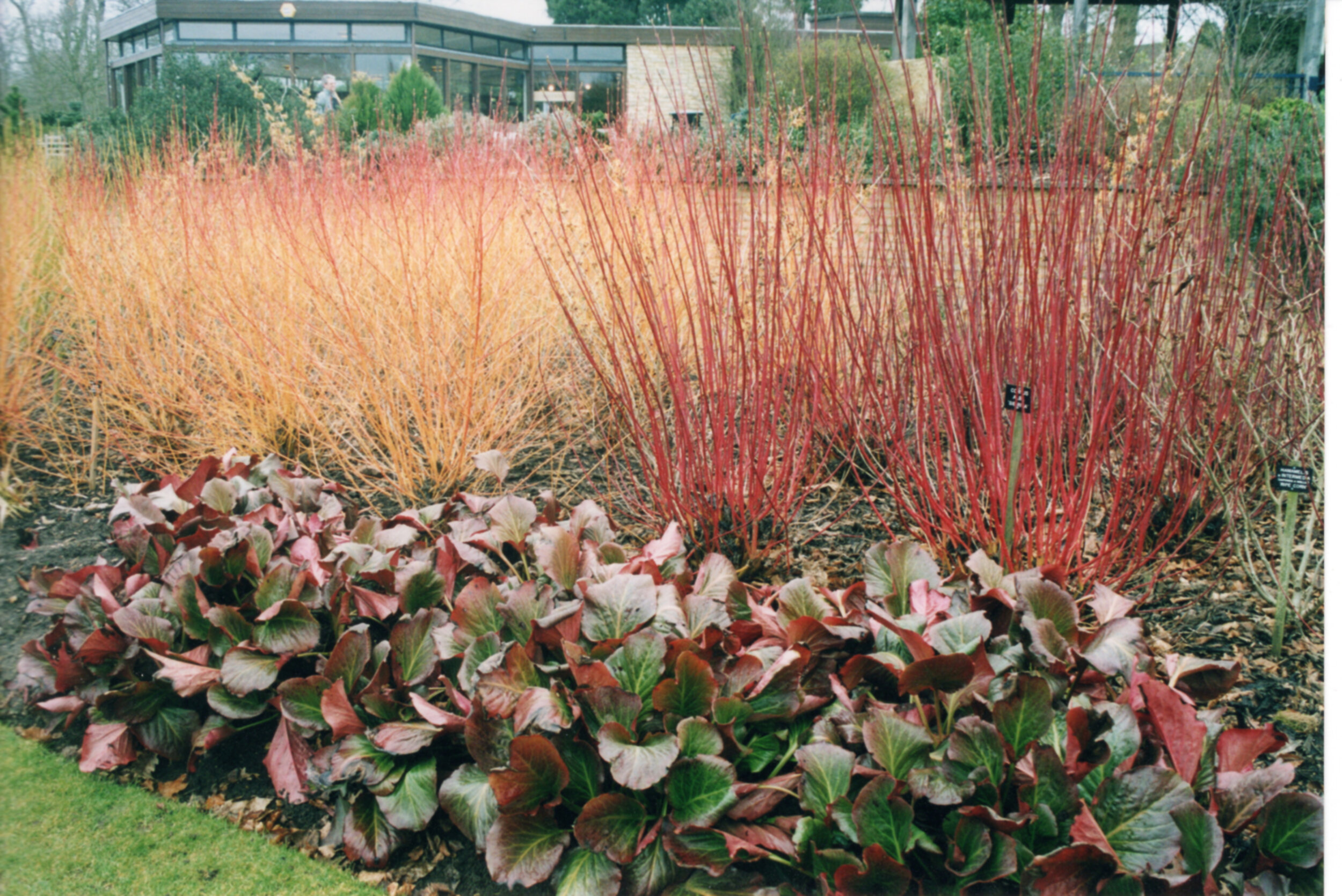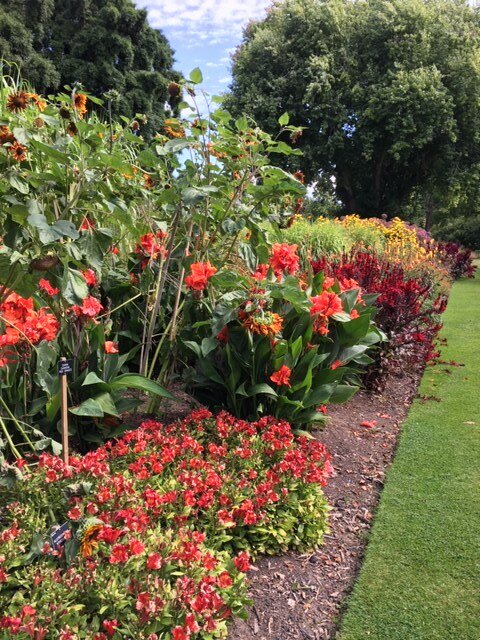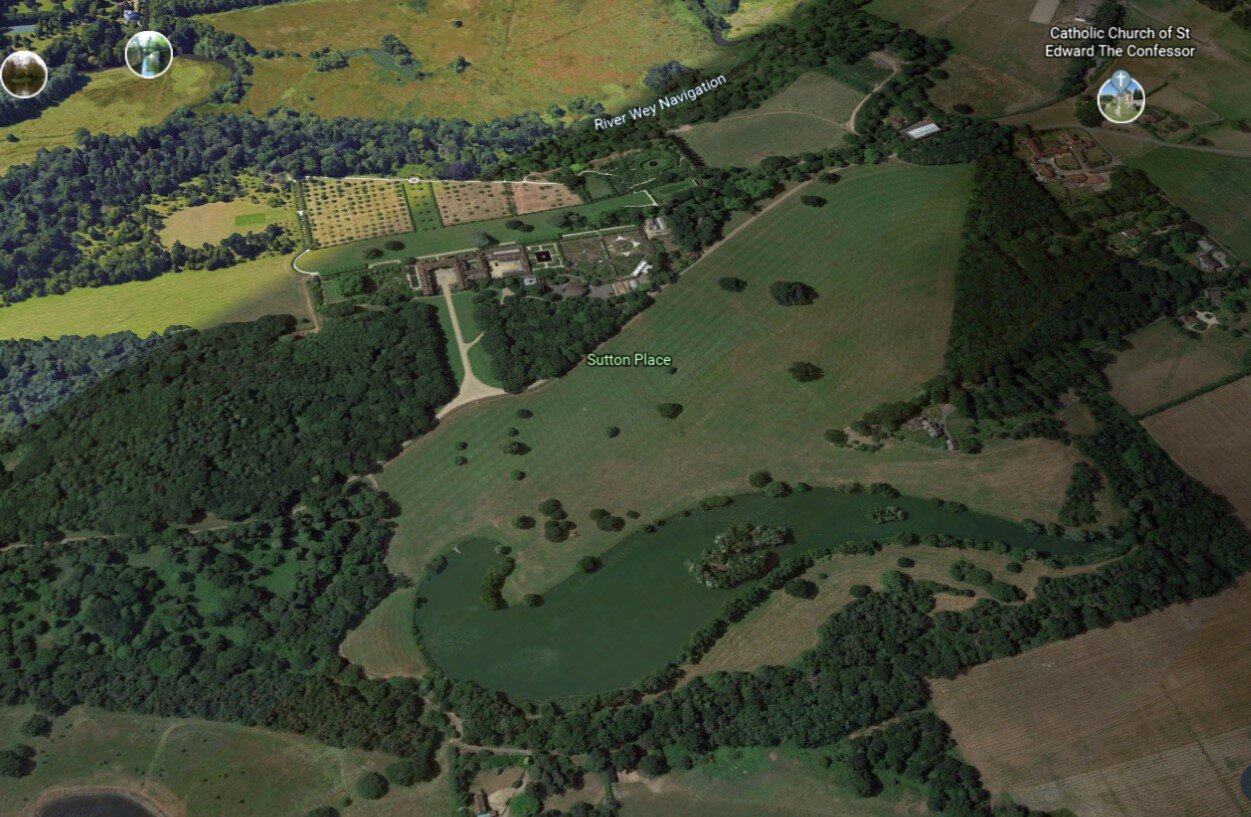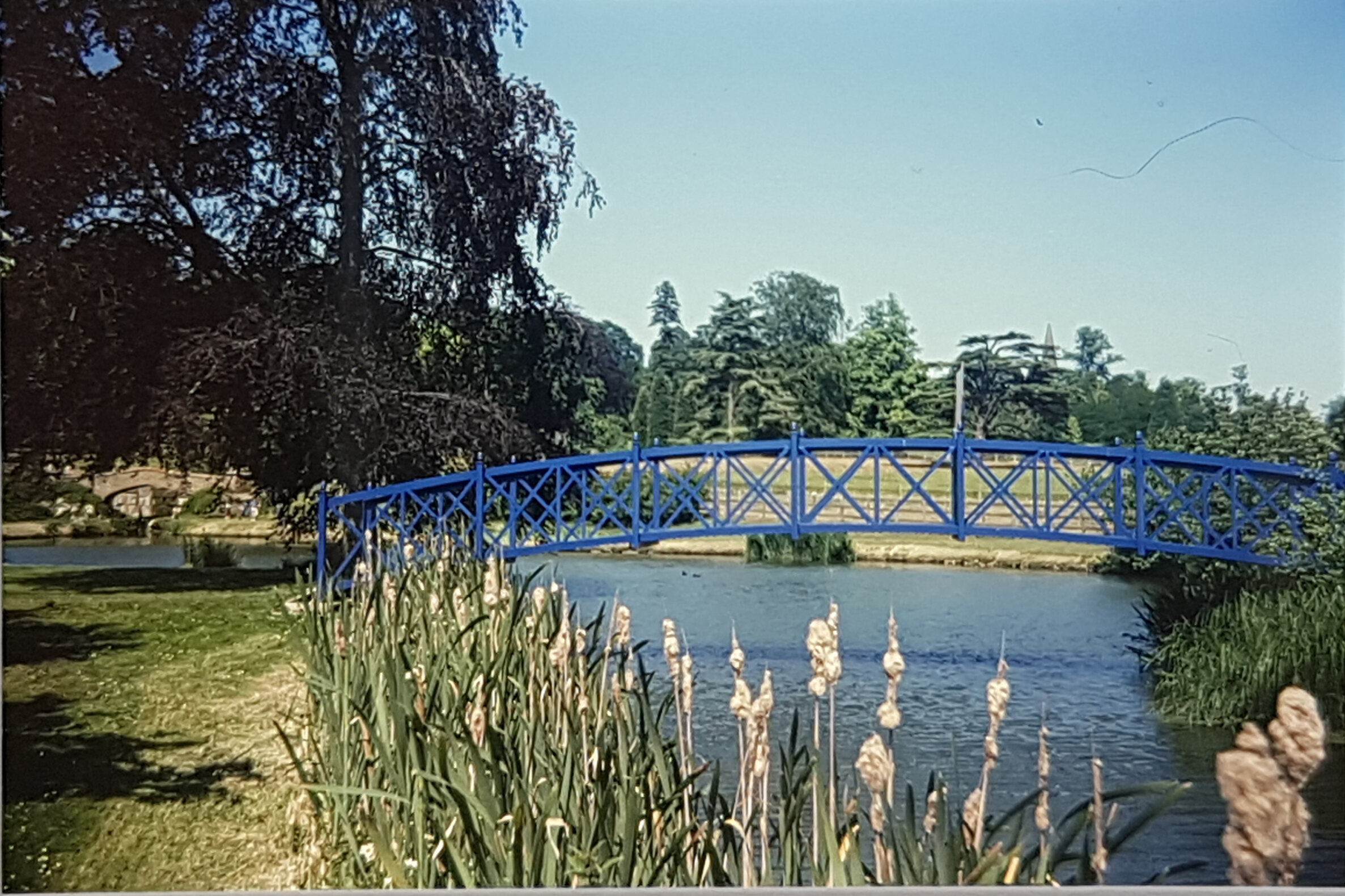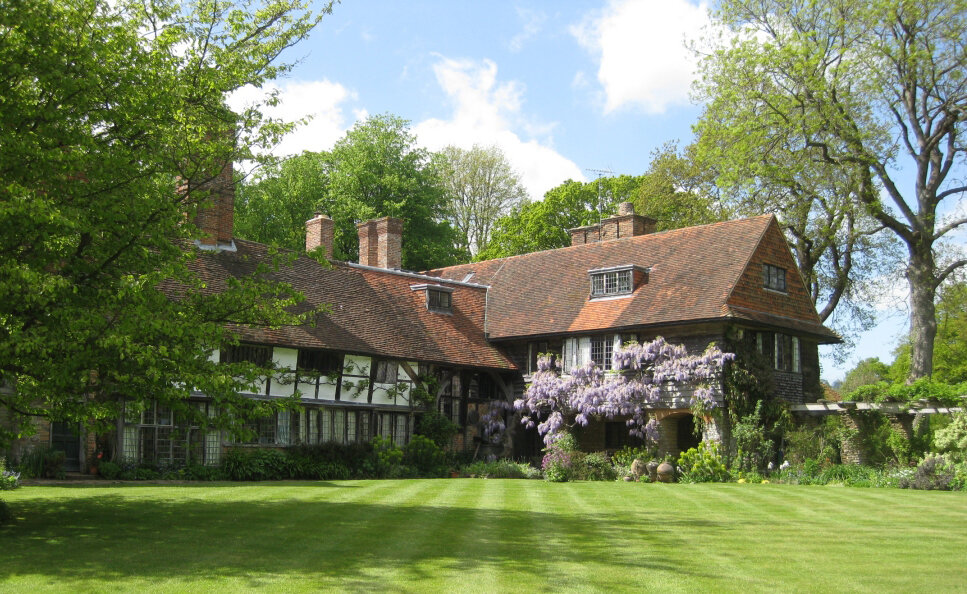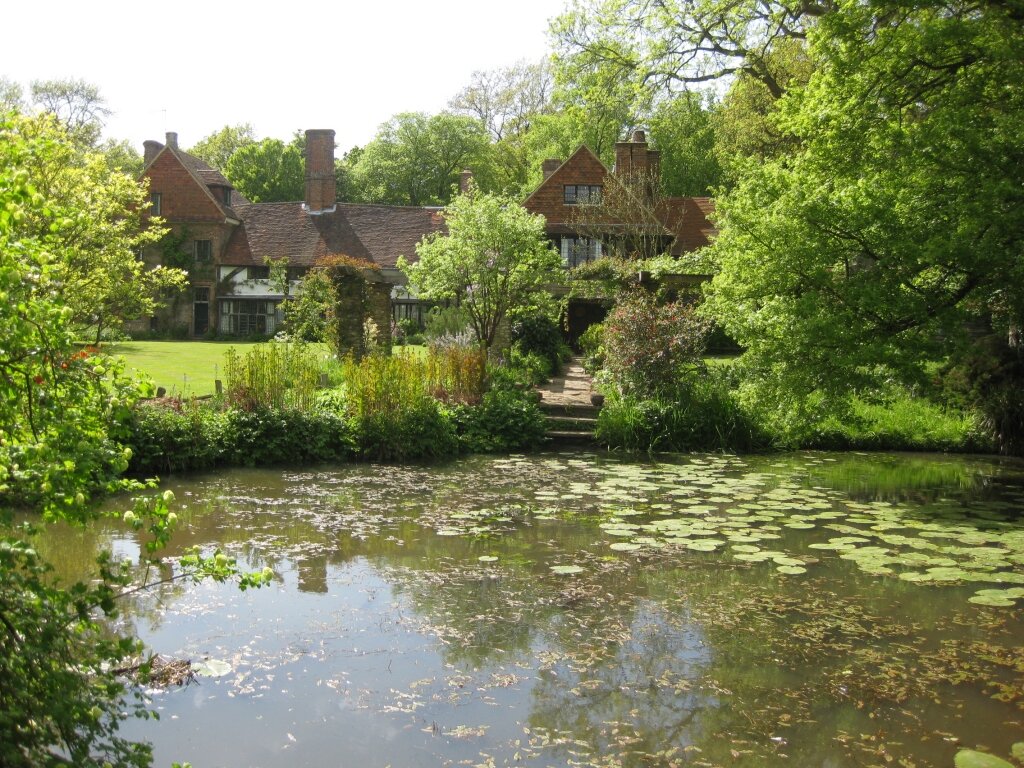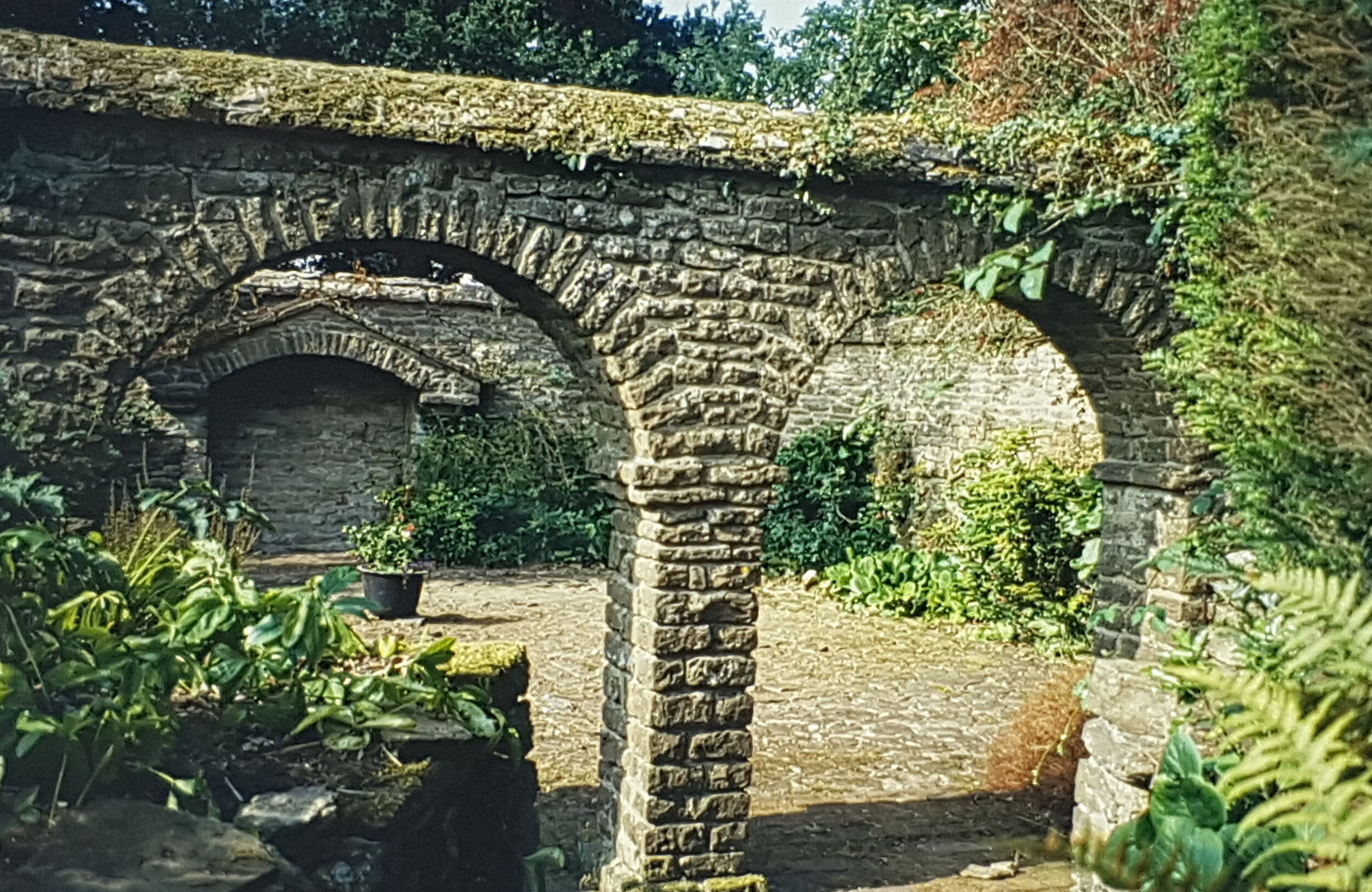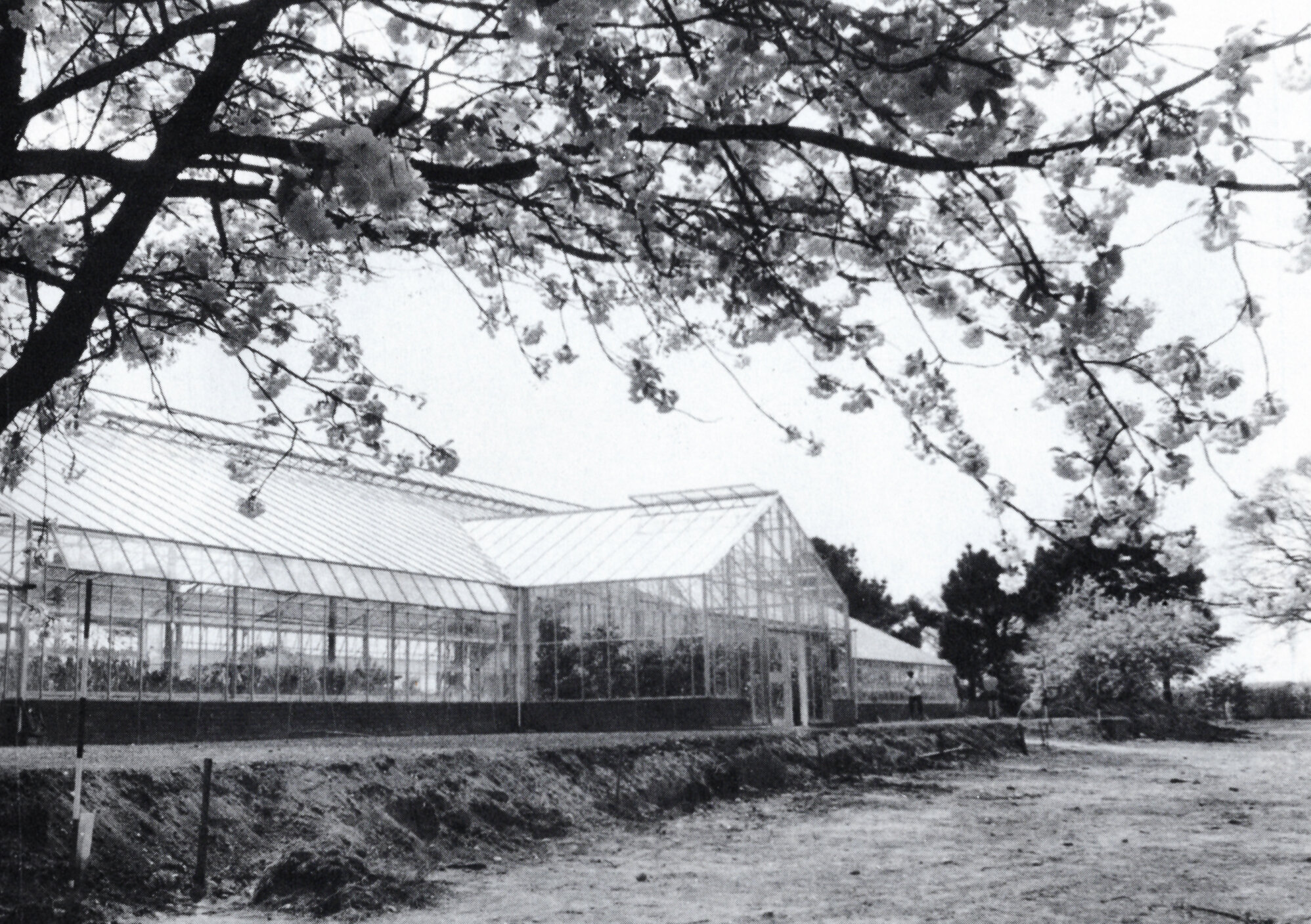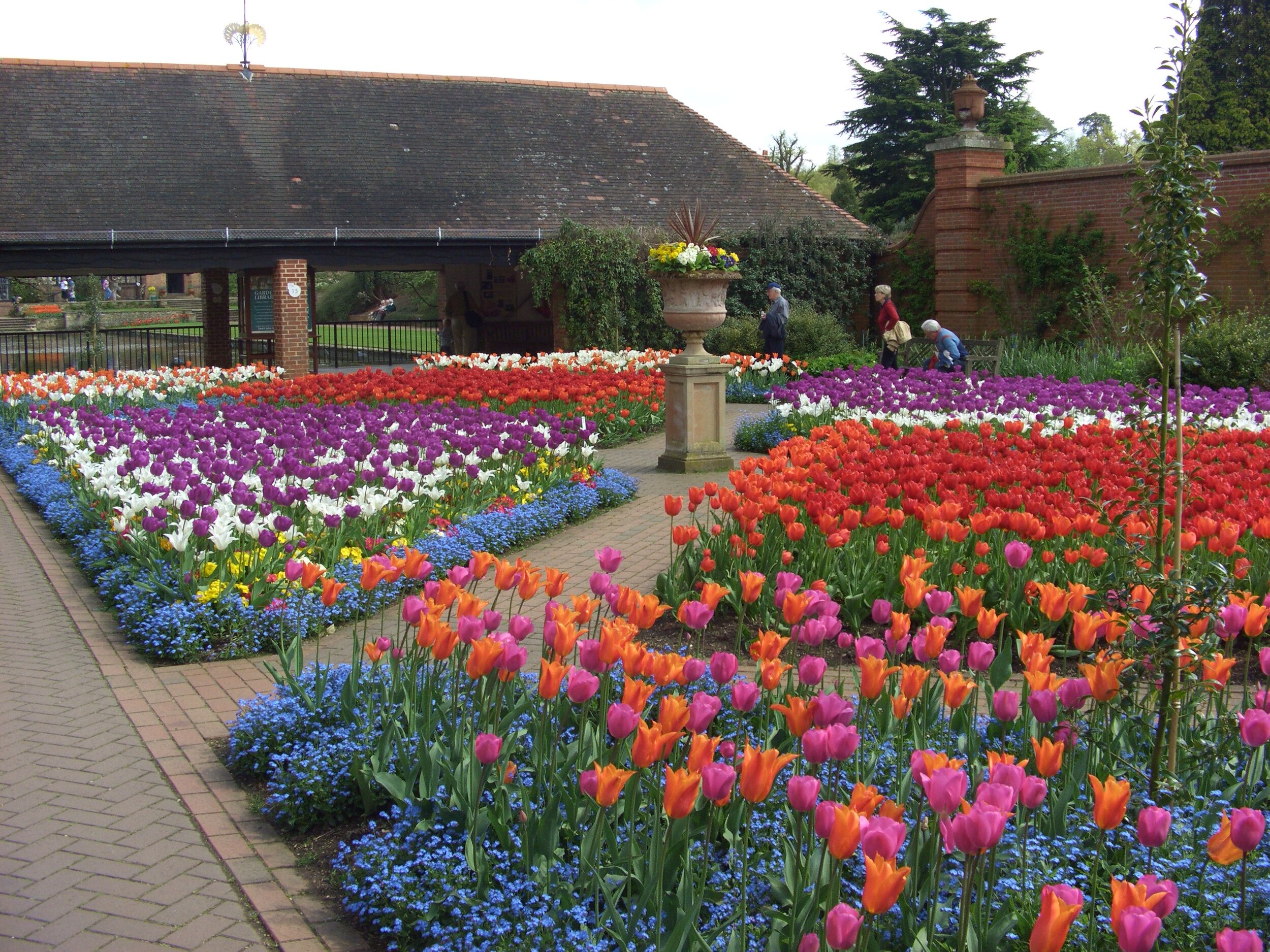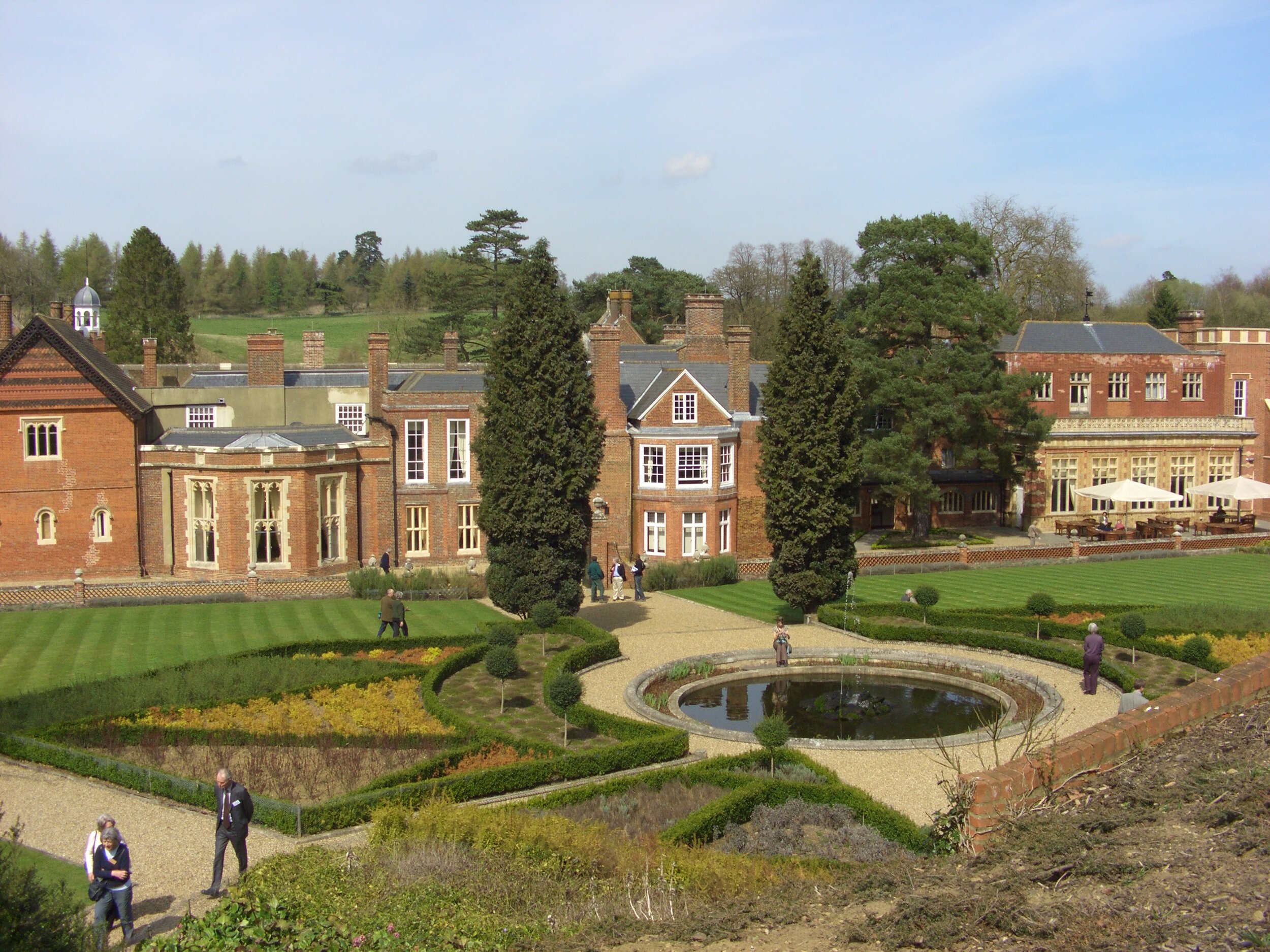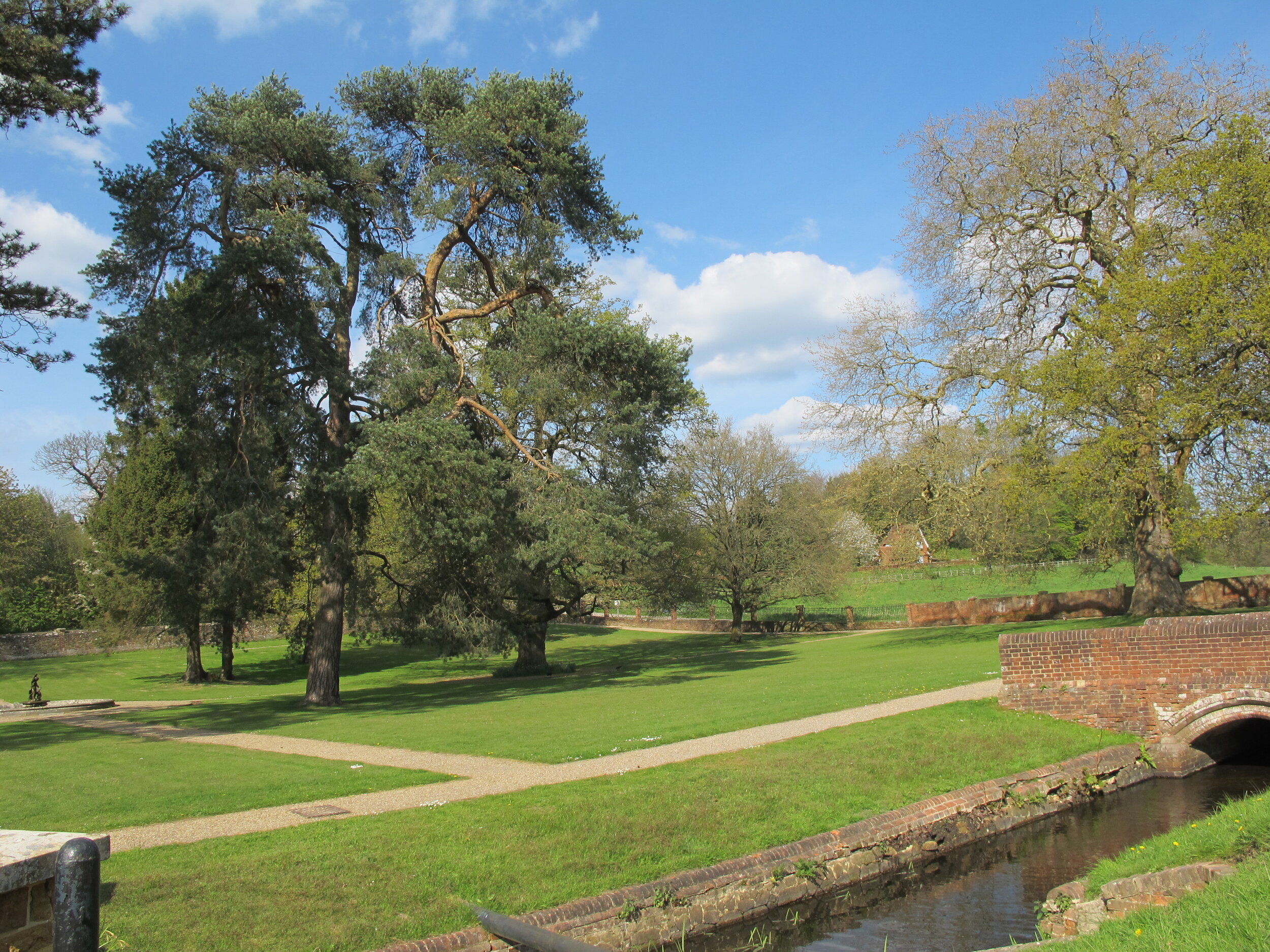REGISTERED parks and gardens in Surrey
Alphabetically listed below are the 42 gardens, parks and cemeteries of national significance in Surrey that appear in the Historic England Register of Parks and Gardens of Special Historic Interest. There are nearly 1700 registered parks and gardens in the UK on the Register. These are graded Grade I, sites of exceptional interest, Grade II*, particularly important sites of more than special interest and Grade II, sites of special interest, warranting every effort to preserve them. A historic designed landscape on the Register is a 'designated heritage asset'. Research by Surrey Gardens Trust's researchers and recorders of the nationally important sites, Nonsuch, Ashtead, Gatton, Bagshot, Frimley and Farnham Parks and Sutton Place provided the necessary information for these to be included on the Register following the original compilation in the 1980s.
We have included a full list of the parks and gardens included on the Historic England heritage list. Do not hesitate to get in touch with the Research and Recording Group if you would like any further information. We have also included links to useful sites relevant to each property. The symbols are defined above for ease of reference.
ALBURY PARK
Grade I
A mid 17th century terrace, bath house and tunnel, surviving from a garden designed by John Evelyn, with mid 19th century exotic tree planting by Henry Drummond set within a park of 17th century origin. A Brief Guide to the Grounds of Albury Park.
Private: NGS opening
ASHTEAD PARK
GRADE II
A 17th century park, developed during the 18th century and 19th century by successive owners.
Open access to northern part (Mole Valley District Council), southern part is City of London Freemen’s School
Bagshot Park, Windlesham
Grade II
Mid Victorian gardens and pleasure grounds belonging to the Duke of Connaught, set in parkland reimparked in the late 17th century, and incorporating pleasure grounds of the early 19th century laid out for the Duchess of Gloucester.
No access
BROOKWOOD CEMETERY, BROOKWOOD
GRADE I
The largest cemetery in England, founded in 1852 to house London’s dead, serviced by its own railway line and laid out and planted to J C Loudon's principles.
Regular Openings (Woking Borough Council)
Busbridge Lakes, Busbridge
GRADE II
A collection of mid 18th century follies set within a secluded steep-sided valley containing a chain of lakes. Original house demolished and present Edwardian house on site to the north.
Occasional openings of garden, house not open (site in a number of different ownerships)
Clandon Park, Guildford
GRADE II
Gardens and pleasure grounds within a landscaped park, circa 1776-81, by Lancelot Brown replacing the early 18th century formal gardens. Gardens further developed in the late 19th century, with advice by a Mr Nesfield, and in the late 20th century
National Trust (house and immediate grounds), rest in private ownership
CLAREMONT, ESHER
GRADE I
Extensive and complex pleasure grounds and park around a country mansion. Main phases 18th century and early 19th century, with early 18th century work by Sir John Vanbrugh with Charles Bridgeman and possibly Stephen Switzer, and William Kent with Thomas Greening; mid 18th century work by Lancelot Brown; and early 19th century work by J W Hiort, J B Papworth, and A C Pugin. Claremont was highly influential in the English landscape movement during the 18th century.
National Trust and Claremont Fan Court School (house and immediate grounds occasionally open)
Deepdene (including Chart park), Dorking
GRADE Ii*
Pleasure grounds first laid out by Charles Howard in the early 1650s. Further developed in the late C18 and early C19 by Thomas Hope. Chart Park initially added to the estate in 1671, separated in 1718 but reunited in 1814.
Farnham park, Farnham
GRADE Ii
A 14th-century deer park associated with 12th/13th-century Farnham Castle and laid out as a landscape park by Bishop North in the late 18th and early 19th centuries. The early 19th-century pleasure grounds within the curtain wall of the castle survive in part, as do those around the Ranger’s House in the centre of the park.
Open access to park, gardens around Ranger's House are private. Castle - English Heritage.
Waverley Borough Council
Frimley Park, Camberley
GRADE Ii
Formal gardens to a design of 1920 by Edward White of the firm Milner, Son and White, accompanying a country house, surrounded by C19 pleasure grounds and parkland.
Cadets Training Centre
great fosters, egham
GRADE Ii*
A 16th-century house with formal gardens laid out in 1918 by W H Romaine-Walker in partnership with G H Jenkins, incorporating earlier features.
greathed Manor, lingfield
GRADE Ii
Early C20 formal gardens, possibly designed by Harold Peto, set in a park associated with a country house.
No access
HASCOMBE COURT, BUSBRIDGE
GRADE II
An early 20th-century country house surrounded by formal and informal gardens laid out initially from 1907, with major additions circa 1922 to designs by Gertrude Jekyll working with the architect C Clare Nauheim, and further work in the late 1920s to designs by Percy Cane.
No access
Hatchlands, East Clandon, Guildford
GRADE Ii
Park with probably late 18th-century origins improved following the commissioning of a Red Book from Humphry Repton in 1800, associated with Grade I listed house. Its garden and pleasure grounds include mid-18th-century features and a formal garden of 1914 by Gertrude Jekyll.
National Trust
Jellicoe roof garden, Guildford
GRADE Ii
Roof garden of 1956-7 by Geoffrey Jellicoe for Harvey’s department store in Guildford.
KENNEDY MEMORIAL, RUNNYMEDE, EGHAM
GRADE Ii
A memorial landscape commemorating President John F Kennedy (1917-1963) created for the British government and Kennedy Memorial Trust in 1964-1965 by Geoffrey Jellicoe. The landscape, set on a hill to the west of the Runnymede water meadows, is of three parts: a woodland area with a path with 50 steps leading up the hill to the memorial, the memorial itself set in a glade, and a sitting area set in meadowland, with long views across the River Thames.
Open access. Enclosed by National Trust land.
Littleworth cross (previously heathersett), seale and sands
GRADE Ii
A woodland garden containing notable late 19th-century rhododendron hybrids, and the site of the first meeting of Gertrude Jekyll and Edwin Lutyens.
No access
Lower gatton park, reigate
GRADE Ii
Park and pleasure grounds forming the setting for a country house, with improvements to the existing part in the 1760s and 70s by Lancelot Brown; mid-19th-century remodelling around the house. Gardens remodelled in the late 19th-century by H E Milner, and further elaborated during early 20th century.
Public footpath across site. Part National Trust, part Royal Alexandra & Albert School. Regular openings
merrow grange, guildford
GRADE Ii
Mid-19th-century formal gardens, with late-19th-century and early-20th-century picturesque pleasure grounds and associated artificial rockwork by Messrs James Pulham and planting by James Veitch and Son.
No access
moor park, farnham
GRADE Ii
Remains of late-17th-century formal garden layout by Sir William Temple, extended early 18th century, set in informal grounds with 19th century planting.
No access
Munstead wood, busbridge
GRADE I
The late-19th/early-20th-century home and garden created and lived in by Gertrude Jekyll for over fifty years, the house designed by Sir Edwin Lutyens.
Nonsuch park, cuddington
GRADE ii
The site of the Tudor palace of Nonsuch, and accompanying gardens, is within Henry VIII’s much larger Little Park, disparked in the late 17th century and early 18th century. The present mansion was at one time the home of Thomas Whately, author of Observations on Modern Gardening, 1770, who was responsible for making improvements to the existing gardens. A Walk Round the Gardens of Nonsuch Mansion.
Open access (Epsom & Ewell Borough Council)
NORBURY PARK, MICKLEHAM
GRADE II
Pleasure grounds and park of 163ha, laid out by William Lock, in the late-18th century, to accompany a new country house, and in part incorporating existing parkland. Some improvements were carried out in the first half of the 19th century.
Owned and managed by Surrey County Council, managed for conservation by Surrey Wildlife Trust. Access to park only.
OATLANDS, WEYBRIDGE
GRADE II
An 18th century informal landscape created from an earlier formal design incorporating the river terrace of the Thames within a Tudor deer park.
ORCHARDS, BRAMLEY
GRADE II*
An example of a late-19th-century house and garden in the Surrey vernacular style, resulting from a collaboration between Edwin Lutyens and Gertrude Jekyll.
No access
Painshill park, cobham
grade I
Landscaped pleasure grounds and park laid out between 1738 and 1773 by the Hon Charles Hamilton.
PEpER HAROW PARK, NEAR GODALMING
GRADE ii
Mid-18th-century landscape park designed by Lancelot ‘Capability’ Brown with buildings by William Chambers and A W N Pugin.
No access. Peper Harow Park
Polesden Lacey, Great Bookham
GRADE II*
Gardens and pleasure grounds laid out in 1761, modified by R B Sheridan in 1790s, and by Joseph Bonsor in circa 1820-5, when the estate was enlarged and walled gardens were built. Walled gardens laid out as flower gardens from circa 1906 onwards.
pyRford court, pyRford
GRADE ii
An early-20th-century garden designed by Lady Iveagh, strongly influenced by the writings of Gertrude Jekyll, surrounding a contemporary country house.
No access
Reigate Priory
GRADE II
Remains of formal gardens and pleasure grounds, circa 9ha; park, 20ha, probably 16th century or earlier.
Open access (Reigate & Banstead Borough Council)
SAVILL GARDEN AND VALLEY GARDENS, EGHAM GRADE II*
Landscaped woodland gardens created within Windsor Great Park by Sir Eric Savill 1932-9, extended 1950s and 1977.
The Royal Estate, Windsor. Regular openings
ST ANN’S COURT, CHERTSEY
GRADE II*
Late-18th-century cottage orné grounds, modified in 1938 by Christopher Tunnard with an early Modern Movement design.
No access
ST ANN’S HILL AND THE DINGLE, CHERTSEY
GRADE Ii
Late-18th-century planting, on the site of a prehistoric hill fort, laid out in the mid-19th century with picturesque planting. Opened as a public park in 1928, with early-20th-century landscaping by Percy Cane.
Open access Runnymede Borough Council
SUTTON PLACE, WOKING
GRADE II*
A landscape park laid out in the late-18th or 19th centuries to accompany a Tudor mansion, with gardens and pleasure grounds largely laid out in the 19th and early-20th centuries. In the 1980s Sir Geoffrey Jellicoe designed features which were inserted into several of the existing garden compartments, with a lake which was laid out in the park; together these form one of his most important works.
No access
TITSEY PLACE, TITSEY
GRADE II
Mid-19th-century gardens surrounding a country house, set in parkland laid out mainly in the mid-19th century.
VANN, HAMBLEDON
GRADE II*
An early-20th-century plantsman’s garden, laid out by the Caroe family with advice from Gertrude Jekyll.
Virginia water (including fort belvedere and the clockcase), egham
GRADE I
A landscaped lake, created for the first Duke of Cumberland circa 1750 by Henry Flitcroft as part of Windsor Great Park. It was the largest artificial lake of its day. The lake was enlarged and further landscaped, partly by Thomas Sandby, for George III, circa 1780s. The area was again embellished by George IV in the mid 1820s.
Open access to Virginia Water only. The Royal Estate, Windsor.
WATTS CEMETERY, COMPTON
GRADE II*
An Arts and Crafts cemetery laid out by Compton Parish Council and Mary Watts in 1895-8 and extended in 1950-2.
Open access
WESTBROOK, GODALMING
GRADE II
An early-20th-century formal garden designed by H Thackeray Turner with Gertrude Jekyll, surrounding an Arts and Crafts house designed by H Thackeray Turner for himself.
No access
ROYAL HORTICULTURAL SOCIETY’S GARDENS, WIsley
GRADE Ii*
Experimental wild gardens laid out by G F Wilson from 1878 to 1902 and acquired by the Royal Horticultural Society in 1903, and further enlarged and developed since then.
WOBURN FARM, ADDLESTONE
GRADE II
Arcadian landscaped ferme orneé designed by Philip Southcote from 1734/5.
No access
WOTTON HOUSE, WOTTOn
GRADE II*
Mid-17th-century gardens by John Evelyn and George Evelyn, with early- to late-19th-century alterations. A Brief Guide to the Gardens of Wotton House.



























